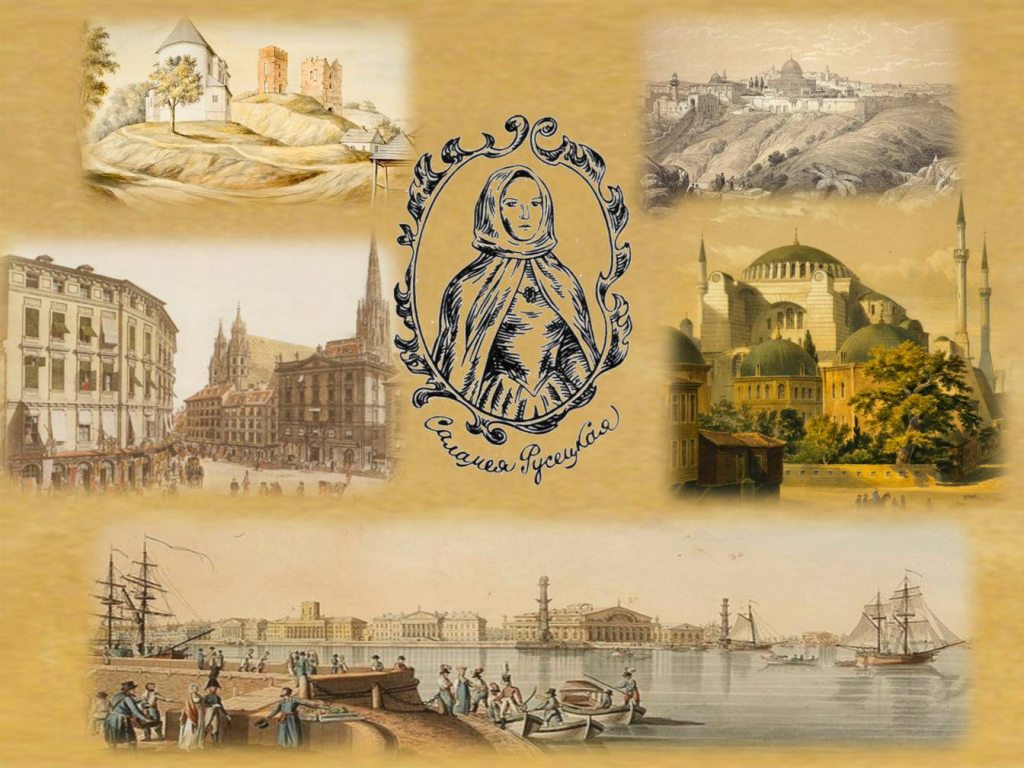Salomea Regina Rusiecka (1718 – after 1760)
is the first female doctor from the Grand Duchy of Lithuania.
The 300th anniversary of Salomea is noted
in the list of memorable dates of UNESCO for 2018.
She is known under a great variety of names: Salomea, Salomée, or Salomėja. In her memoir, she referred to herself as Salomea, but she signed the dedication as Regina. Her maiden name is mentioned as Rusiecki, Rusiecka, Ruseckaitė, Rusieckich. Halpir or Halpirowa is her second name from the first marriage. Her name from the second marriage is rendered as Pilstein, Pilsztyn, Pilsztynowa, Pilštyniova, or Pichelstein.
Salomea Rusiecka is doctor, traveler, adventurer. Did she really exist or perhaps this is just a literary character? What is known about her life is known from her memoirs "Proceder podróży i życia mego awantur" (My Life's Travels and Adventures) written in 1760, which represent a unique example of travel memoir and example of the women's literature.
Salomea traveled a lot in Europe, the Russian Empire and the Middle East to make her living treating people.
We will try to make the same trip with our heroine, to visit the same places, to see them with her eyes, to meet with those people with whom she met, to dip in this epoch and the way of life.
Have a nice journey!
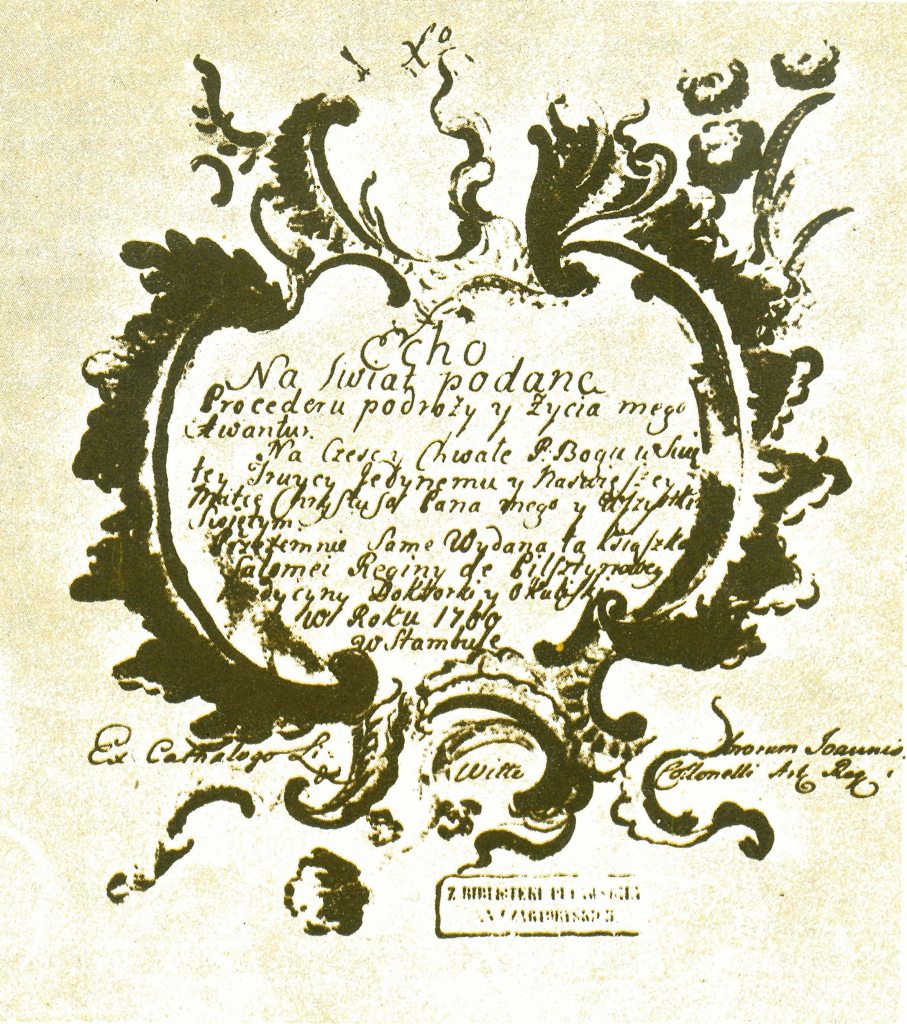
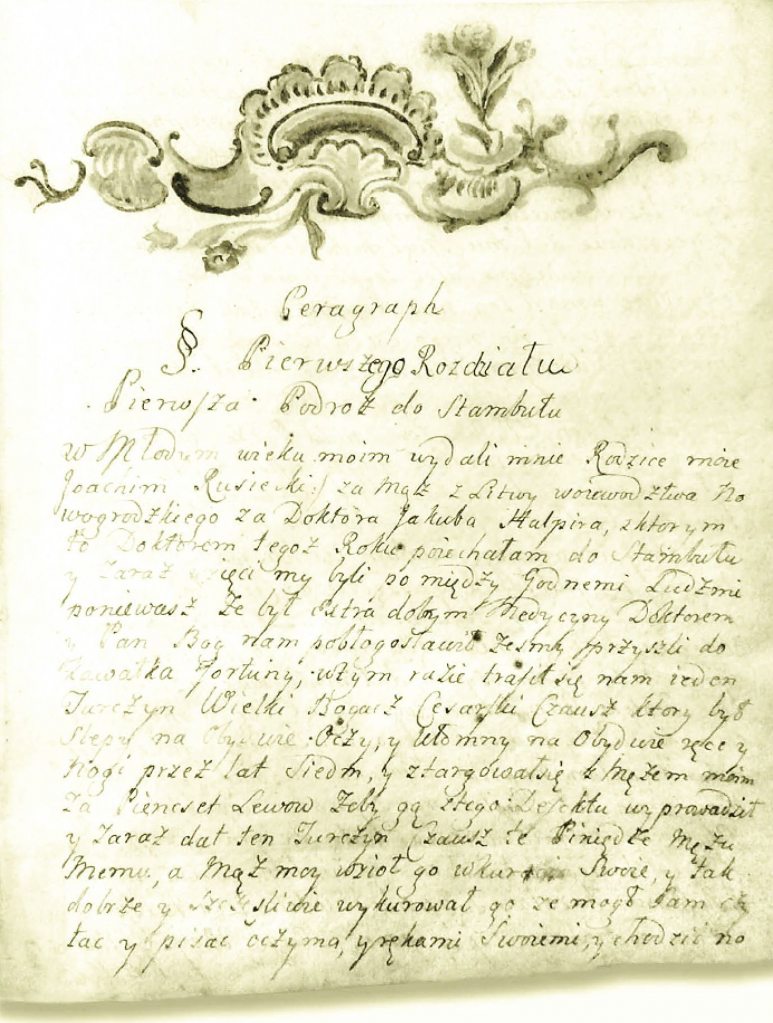
The title page and the 1st page of the Salomea Rusiecka’s notes
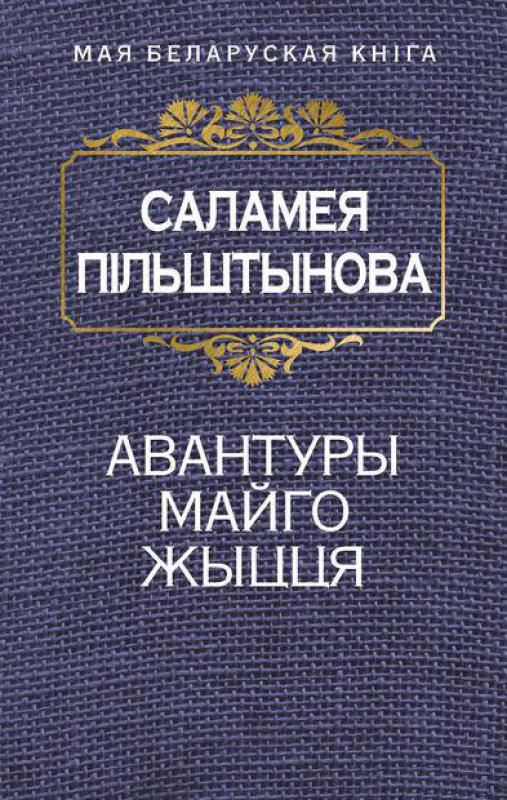
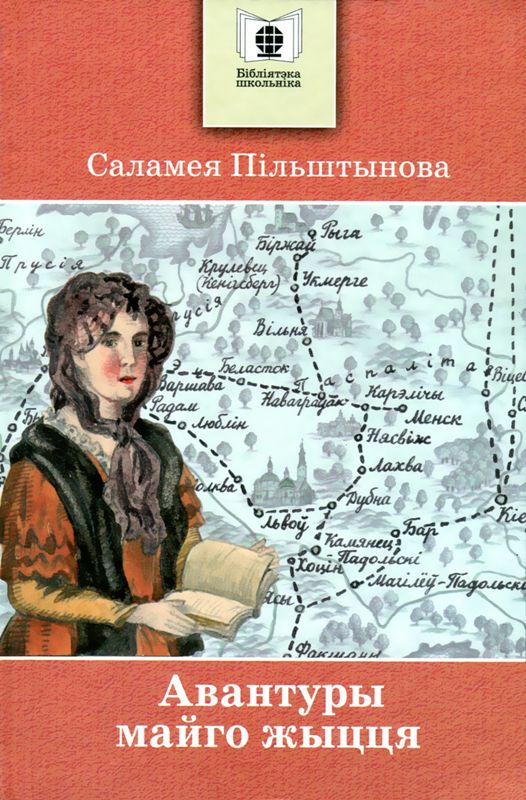
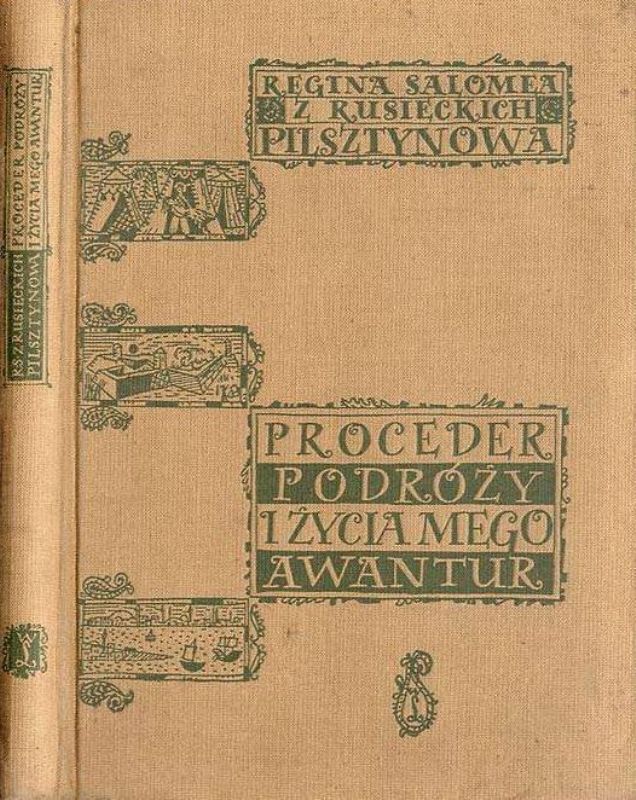
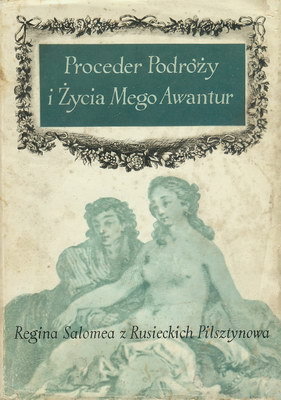
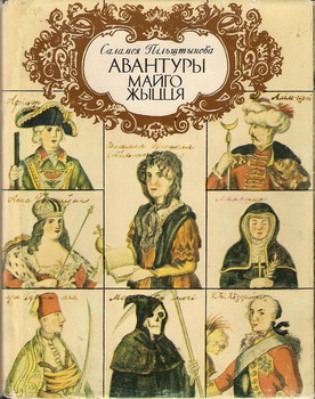
Modern editions of the Salomea Rusiecka’s book
-
Salomea was born near Navahrudak, Grand Duchy of Lithuania, in the family of Joachim Rusiecki who belonged to petty nobility. She was very brave girl.


Navahrudak. Pictures by N. Orda
At the age of 14 she was married off to a German Lutheran oculist Dr. Jacob Halpir. The couple moved to Constantinople, Ottoman Empire, where Dr. Halpir practiced medicine and had many clients.
Turkey
Istanbul was a major trading center of the Ottoman Empire. The harbor in the Golden Horn was considered one of the best in the world. The high steep minarets, chic palaces, shining streams of fountains decorated this great and beautiful city. The city was famous for bazaars, caravansaries, and was distinguished by multilingual crowds of people.
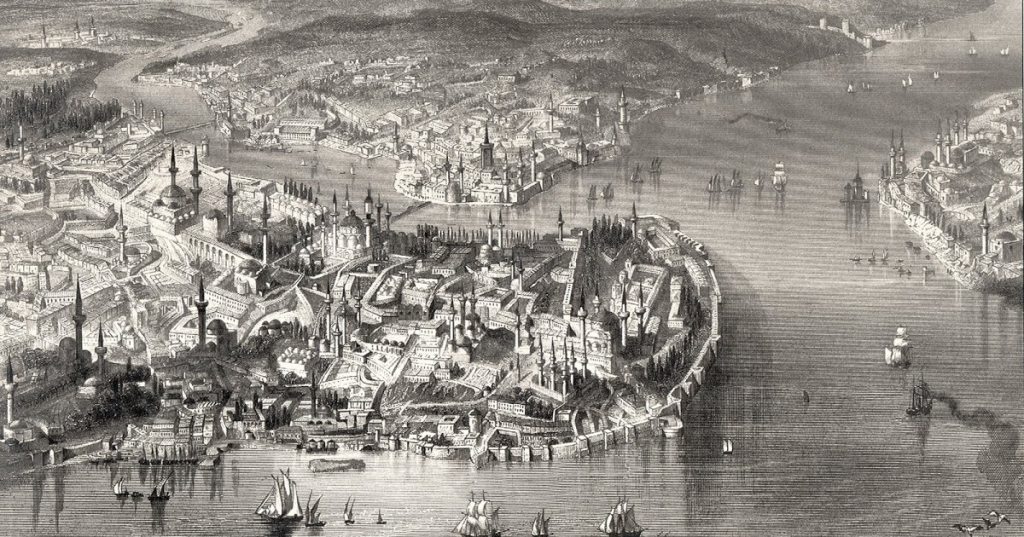
Istanbul in the 18st century

Fountain and Hagia Sophia in Instambul
by U. Bartlet, 1839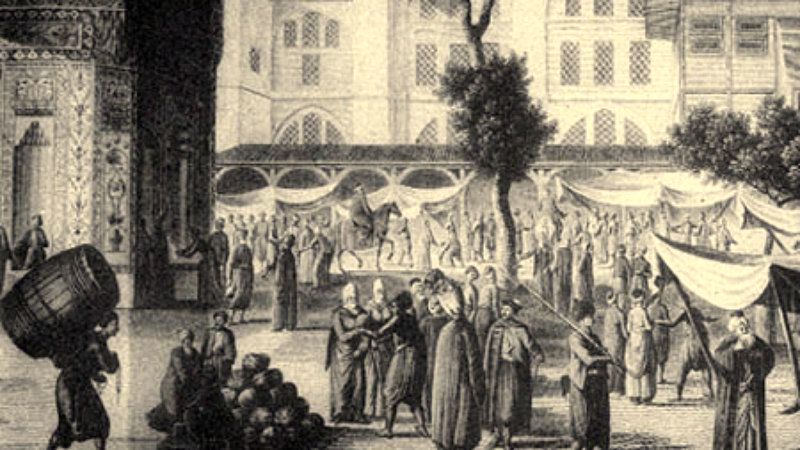
Turkish bazaar
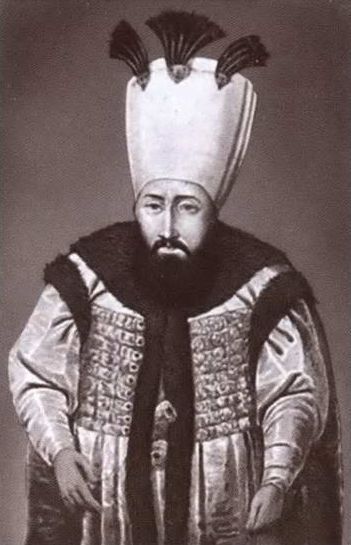
Mahmud I (1696–1754)
Salomea was taught by her husband and assisted him in his operations eventually becoming an accomplished doctor herself, specializing in cataract surgery. Her status as a female doctor helped her find female patients. Salomea never received any formal training in medicine.
The success of the Halpir family caused envy among other doctors. One day the sultan's chaush, treating by Dr. Halpir, died. The chaush's relatives desired to execute a doctor, but Salomea persuaded them not to do this and be satisfied with money compensation. The woman didn’t quiet till she proved her husband's guiltlessness.
Later, her husband was taken ill and died. Salomea was left alone together with their 2-year-old daughter. After a long illness, Salomea thought to return to her native land, and after a while she went to Adrianople together with her little daughter Constance.
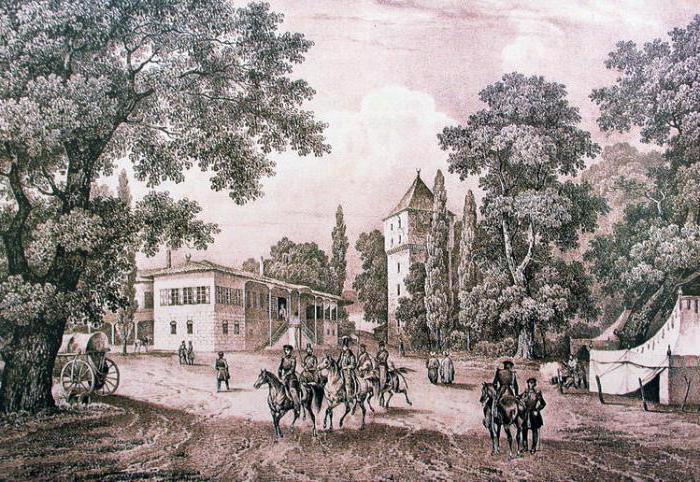
Adrianople in the 18st century
-
After Adrianople, Salomea visited the Bulgarian cities: Yambul, Tatar Pazardzhik, Filibe. In those times this territory belonged to the Ottoman Empire.
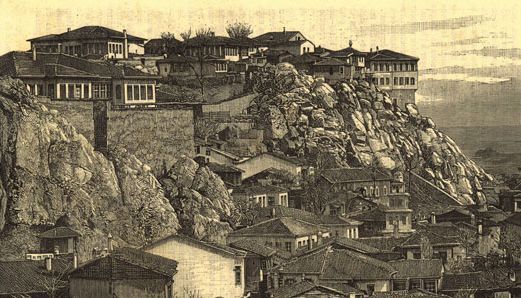
Filibe (Plovdiv). 1885
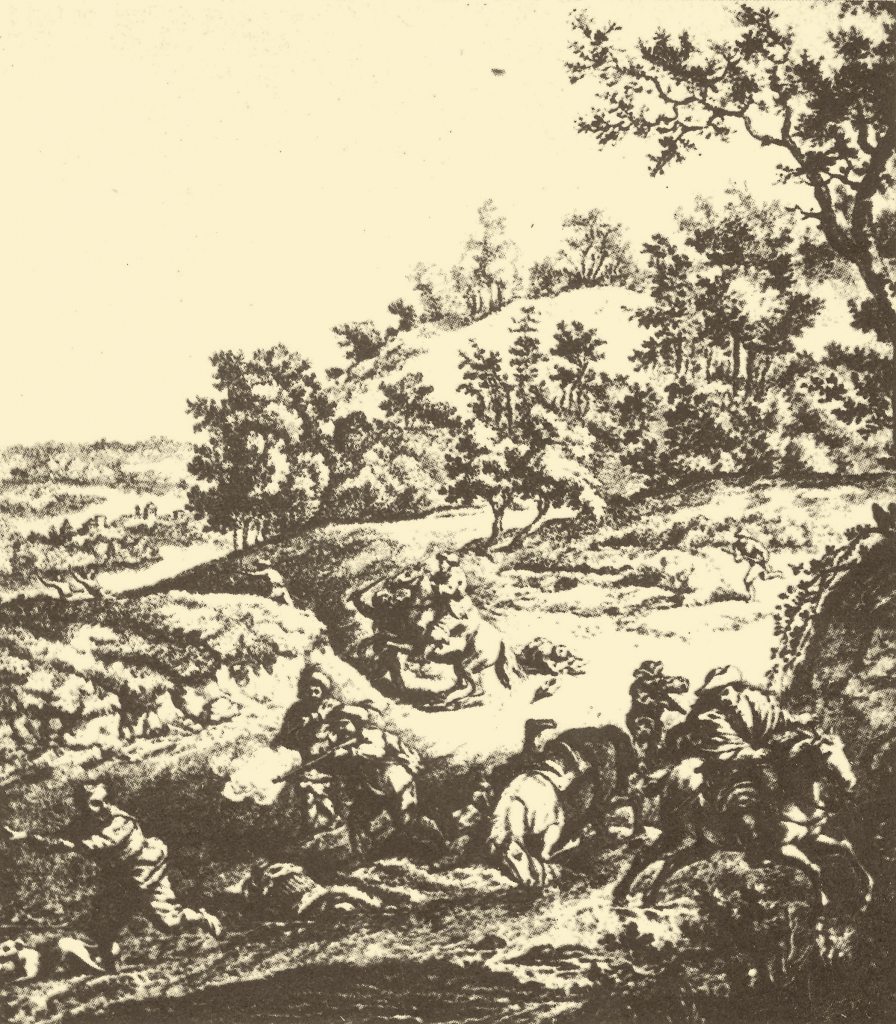
The attack of robbers on the road
(from the medieval engraving)In Bulgaria she treated noble family, which paid her a lot. To get to Sofia, it was necessary to cross the Balkan Mountains. Salomea bought a horse, put on the Turkish men's clothes and hit the road. On her way, she joined the trade caravan, because it was dangerous to go alone: the Sary-Hussein’s gang were raging in the mountains. Salomea tells in her memoirs how she happened to meet this bandit who needed her help. He took her to the town of Karlovo to his family, and she was accepted very well at his house.
Some time later the robber thanked the woman and let her go with a honorary escort to Sofia, where she enlisted at the pasture’s harem.

The Sofia cityscape by G. Quarenghi. Late 18th – early 19th centuries

Harem
There was an Italian physician, through which she learned to write prescriptions in Latin, took place more or less systematic course of medical training.
Fate brought her to the city of Vidin, the main outpost of the Turks in some parts of Bulgaria.

Vidin
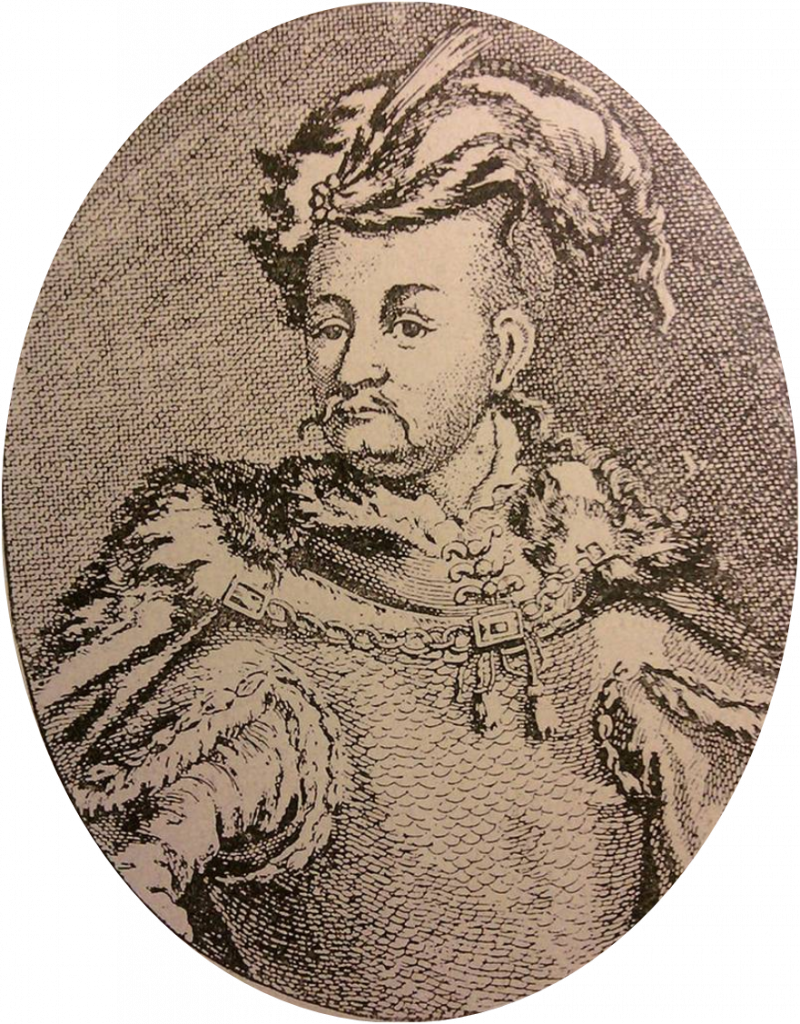
Prince Rakoczy (1700–1738)
The Vidin pasha Hayvaz Mehmet asked her to treat the Transylvanian prince Rakoczy.
Prince Rakoczy felt in love with her, but she denied his love.
Then the prince decided to punish an unapproachable woman and wrote a denunciation, accusing her of spying for Austria. Salomea had to escape to Turkey under threat of death. Together with her daughter and servants she sailed down the Danube to Ruse on a random ship.
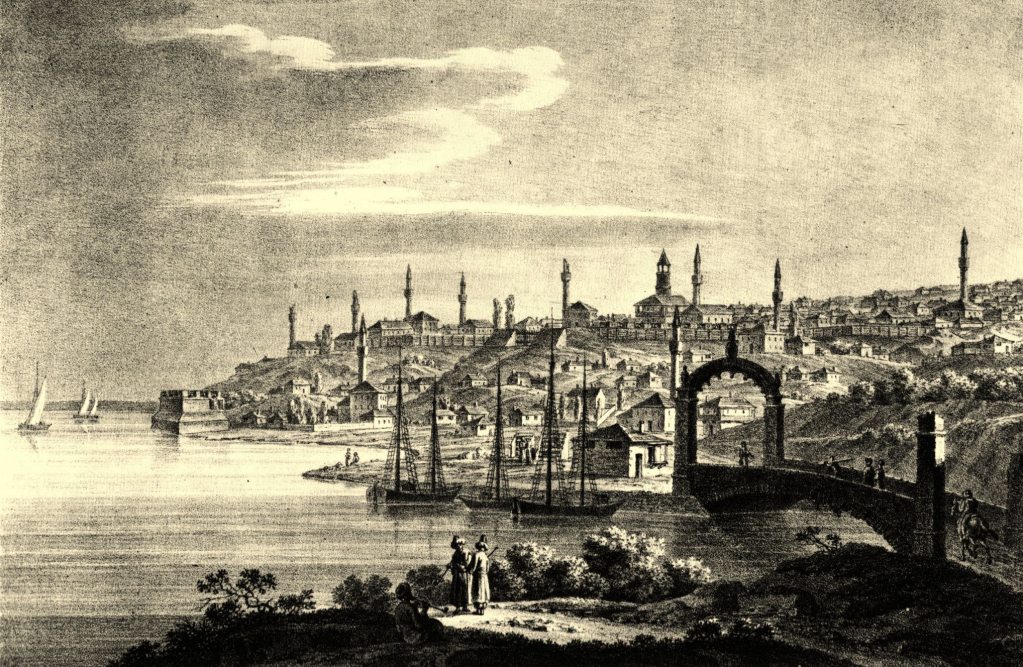
The Ruse cityscape with minarets. 1824
One night she was captured, but her skills saved her life: she treated the local treasurer’s sick son. No doctor could help him.
Salomea got freedom and permission to go to Russia. Her aim was to buy out captured Turks.
-
Nesvizh
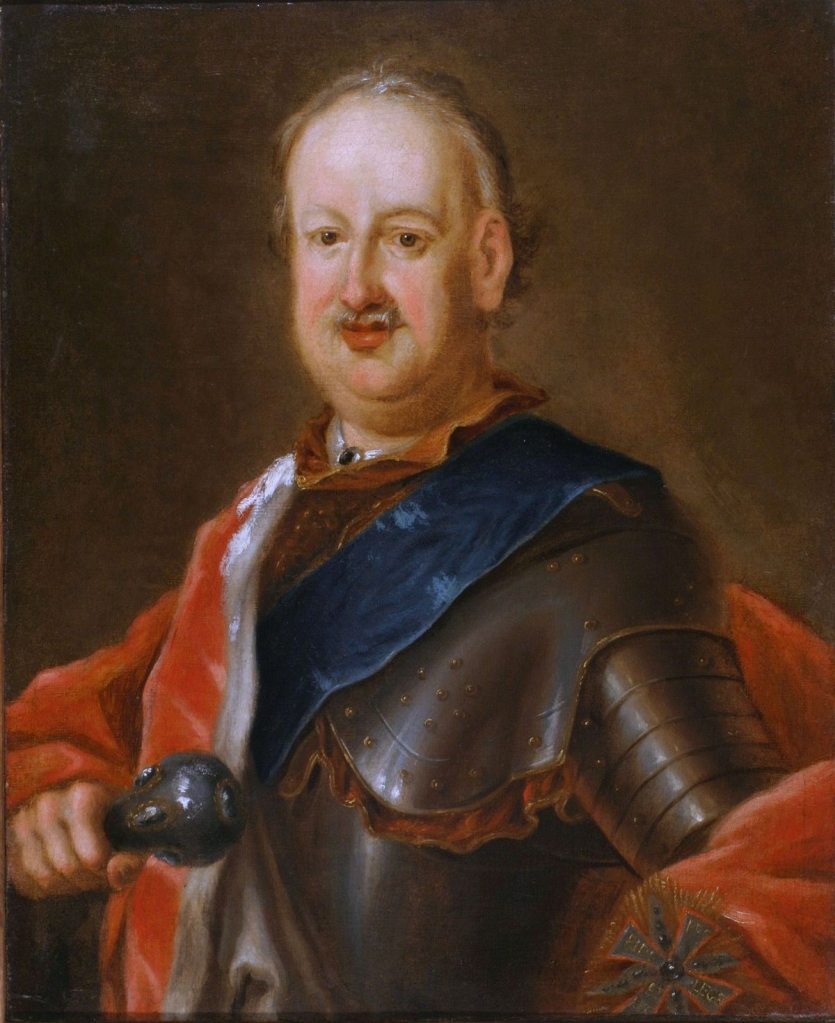
Michal Kazimierz Radziwill Rybenko (1702–1762) by uknown artist
On the way to Russia, Salomea married for the second time in Dubna (Ukraine) with Jozef Pilshtyn, officer, whom she took up from Turkish captivity. The Prince Radziwill got acquainted with Salomea and took her as the doctor in Nyasvizh.
After a while Salomea decided to visit St. Petersburg. The Prince Radziwill did not agree to let go the doctor, saying that she was an ordinary woman, the Empress would not want to talk. But Salomea could achieve her aims and the Prince Radziwill finally gave her permission to go to Russia.

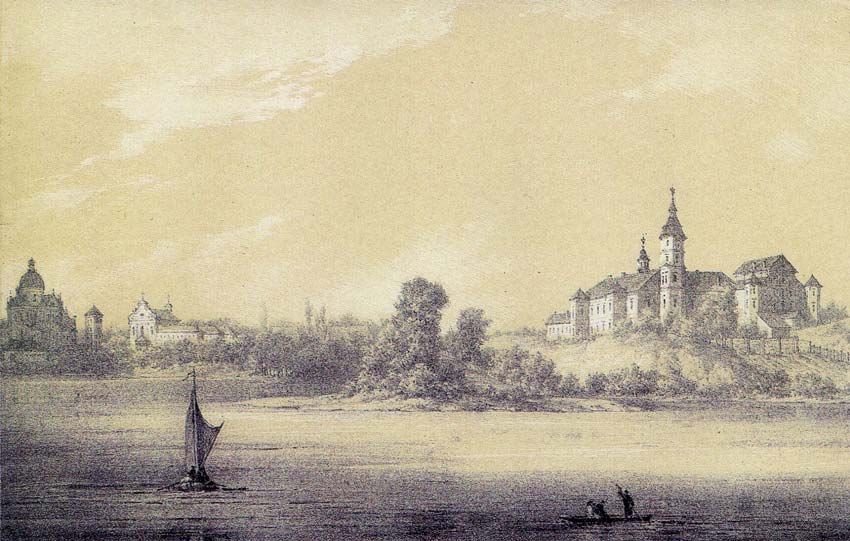
The Radziwill Palace in Nesvizh by Napoleon Orda
On the way she passed Vilna, Riga, Narva, where she got acquainted with interesting people and treated new patients.
Vilna
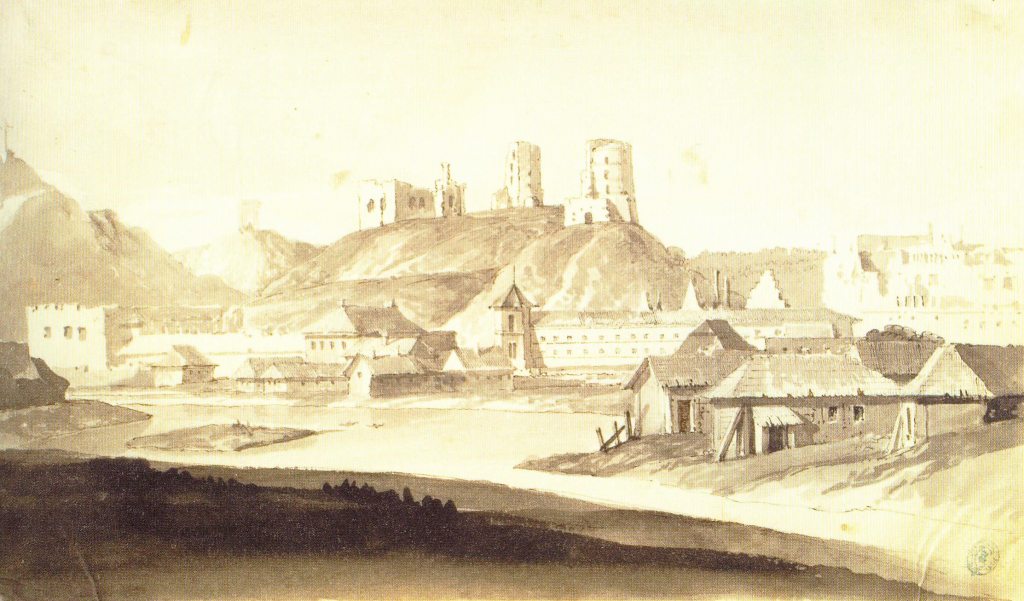
Vilna Castle by F. Smuglevich. 1785
Riga

In 18th century Riga has almost completely retained its medieval image
Narva
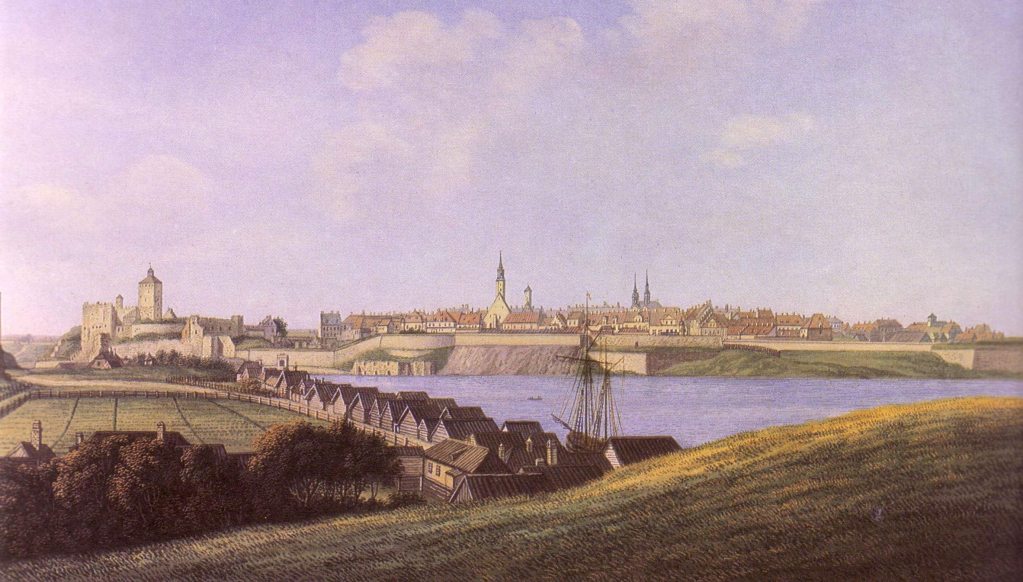
The Narva cityscape in the middle of the 18th century
-
After her arrive to St. Petersburg, Salomea Rusiecka settled on Vasilyevsky Island in the home of the labor foreman Semyon Karaulov on the recommendation of his sister, Maria, whom she met in Narva.
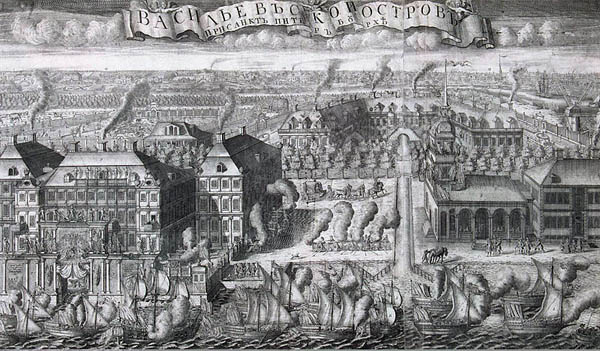
Vasilyevsky Island by A. Zubov. 1714

Vasilyevsky Island. View from the Palace Quay by B. Patersen. 1799

Sheremetiev Palace
Salomea liked a lot the North capital. In her memoirs she wrote a lot about the St. Petersburg, russian traditions, people. She admired pleasant and polite inhabitants of St. Petersburg, order and purity in the streets, low prices, new manufactories.
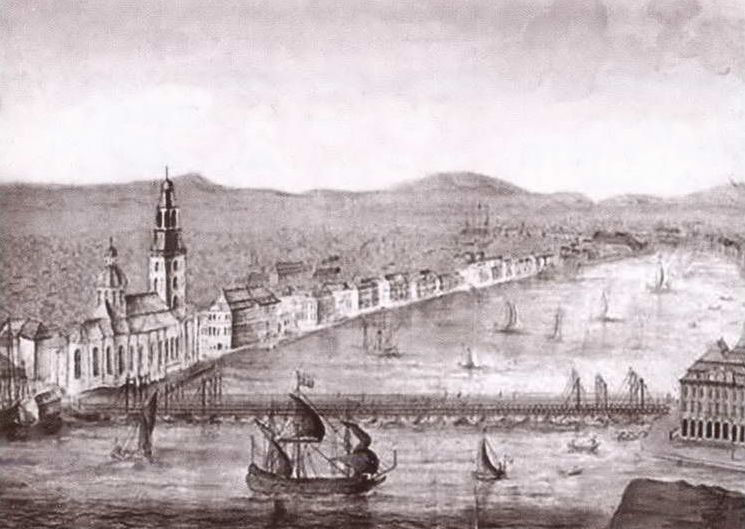
View of the Church of St. Isaac, the floating bridge and the building of the Twelve Collegiums from the Kunstkamera Tower by O. Elliger. Early 1730s
The Princess Maria Cherkaskaya, wife of the Prime Minister of the Empress Alexei Cherkasky, employed Salomea and helped her to get an audience with Empress.
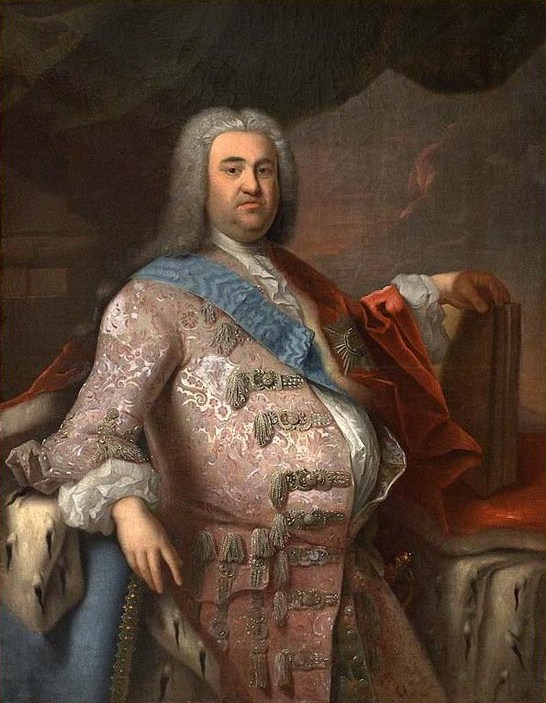
Alexey Cherkassky by I. Argunov

Maria Cherkasskaya by I. Argunov
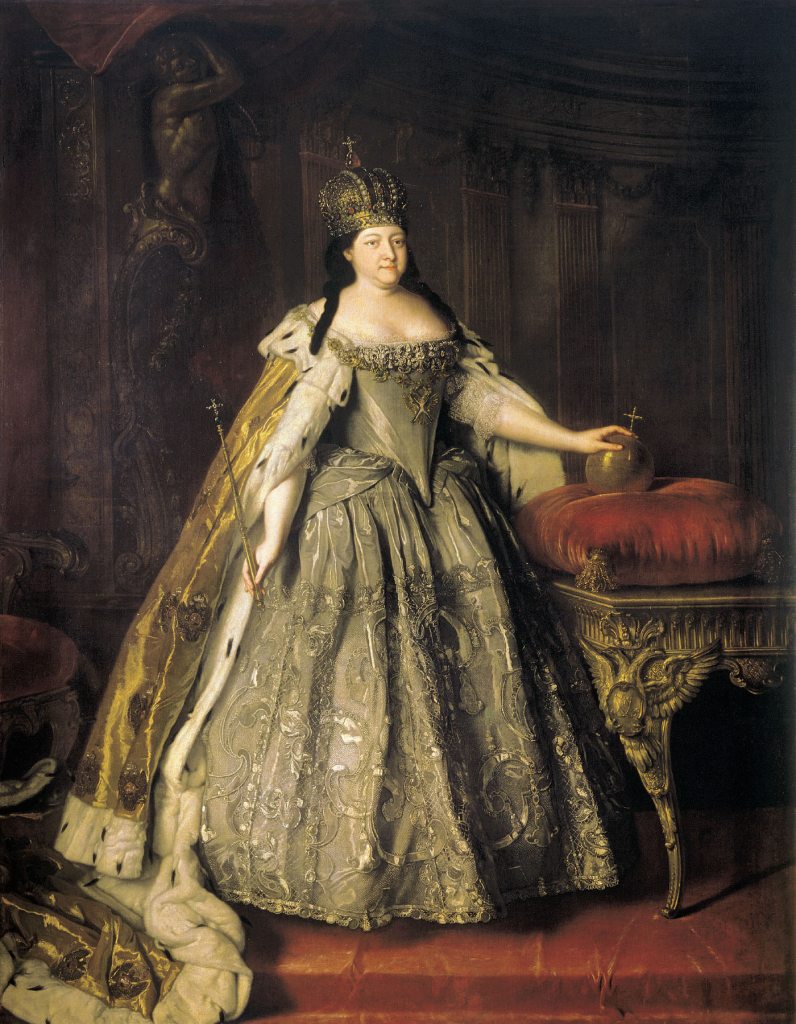
Portrait of Empress Anna Ioannovna (1693–1750)
by Louis CaravaqueThe Princess did not use Salomea for common labour, and always took her in a the carriage. At the Russian court Salomea has witnessed many events and intrigues and rumors. One day Salomea treated cataracts of laundress, which helped to get an appointment to the Empress.

Winter Palace in St. Petersburg: the residence of the Empress Anna Ioannovna

View of the Old Winter Palace and the Admiralty. Engraving from images by M. Makhaev. 1750s
Salamea earned the respect of the Russian nobility, and she sincerely loved this country. When it came time to go forward, Empress Anna gave her 1,000 rubles on the way, a set of silver goblets, fabrics, and instead of the two captured Turks ordered to return four.
From St. Petersburg across Narva, Revel, Riga, Birzhy, Vilkomir, Vilnius and so on she came to Korelichi near Novogrudok. The young woman bored quickly. Salomea didn’t like this quiet, measured way of life.
-
She found a reason to leave the village: she decided to go to the husband’s relatives with the hope to get a monetary penalty for a ransom of Turks from Turkish captivity. And, despite the fact that she was pregnant, she set off (through Poland, Silesia, Moravia, Austria) to the Stainbichl town, as the Kamna Gorica was called in German.
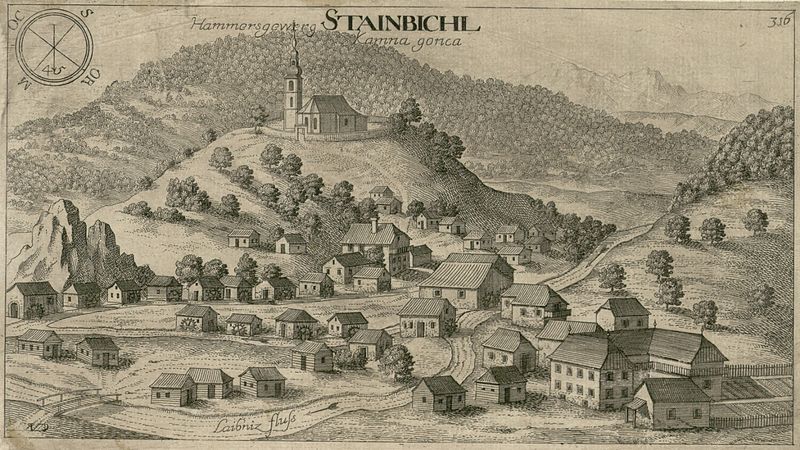
Kamna Gorica by I. Valvasor. 1679
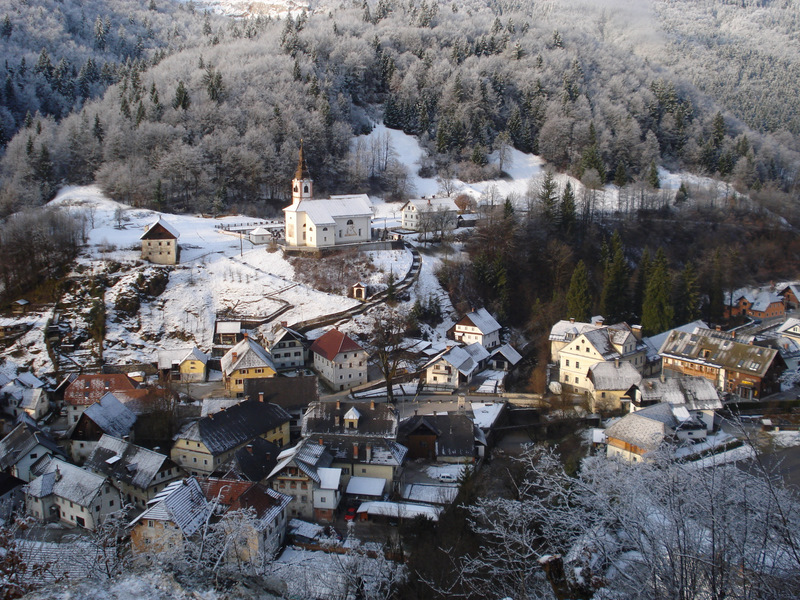
Kamna Gorica. The today’s cityscape
After the rest in Kamna Gorica during a month and a half, but without any earnings, the tireless traveler went to Vienna. She also had hope to receive compensation from the Emperor Charles VI.
Vienna

Vienna in 18th century
Vienna didn’t impress Salomea at first. In the Salomea’s imagining it was worse comparing to St. Petersburg. Furthermore her financial situation only worsened. Many times she was at the reception of the Emperor and in the palace of the Empress, they always received her well and promised to help, but everything was in vain.
Due to the knowledge of Turkish language and traditions she began to treat in the family of Turkish Ambassador Gianna Alibi Effendi. The Salomea’s popularity grew and all the Austrian court addressed to the female doctor to get treatment. Life was coming right. She was getting money, meeting new people, getting new impressions, she gave birth to boy.

St. Stephen's Cathedral in Vienna by K. Schutz. 1779

The Vienna’s cityscape from the Belvedere
by B. Belotto. 1758–1761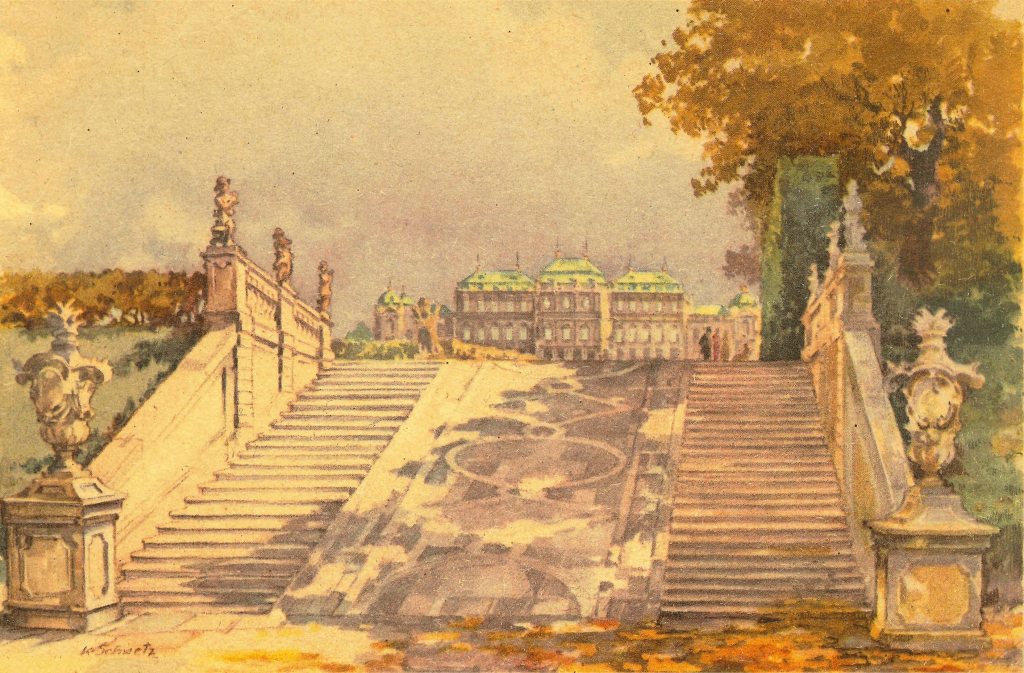
Belvedere Palace in Vienna
by K. Shvets. 1940s
Интересны рассказы Саломеи об императорской семье, о смерти императора Карла, которая случилась во время ее пребывания в Вене, о его дочери Марии-Терезии – следующей императрице.

Charles VI (1685-1740), Holy Roman Emperor by F. Solimena

Elisabeth Christine of Brunswick-Wolfenbüttel (1691–1750), Empress of the Holy Roman Empire by R. Carriera
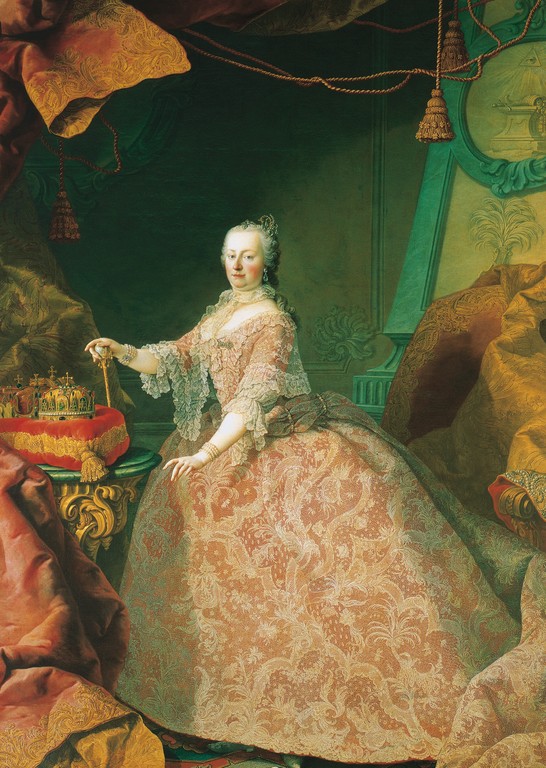
Maria Theresia Walburga Amalia Christina (1717–1780), Empress of the Holy Roman Empire by by M. van Meytens
But Salomea wanted to move on. She went to Olmouc where she spent spent some days.
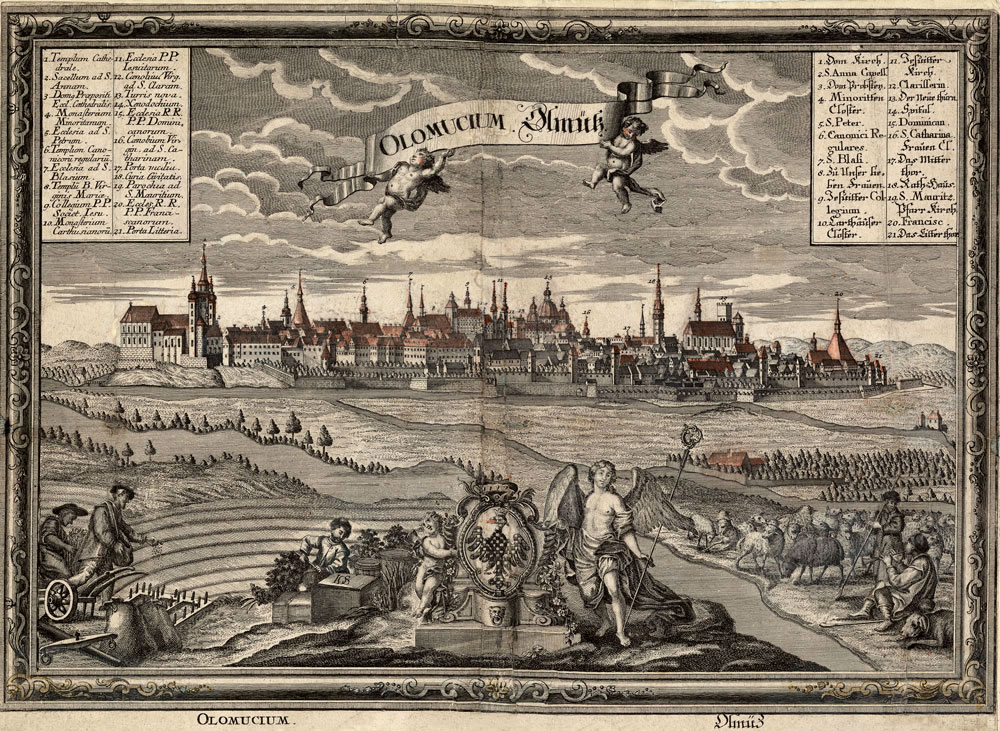
Olmouc. Engraving. 1724
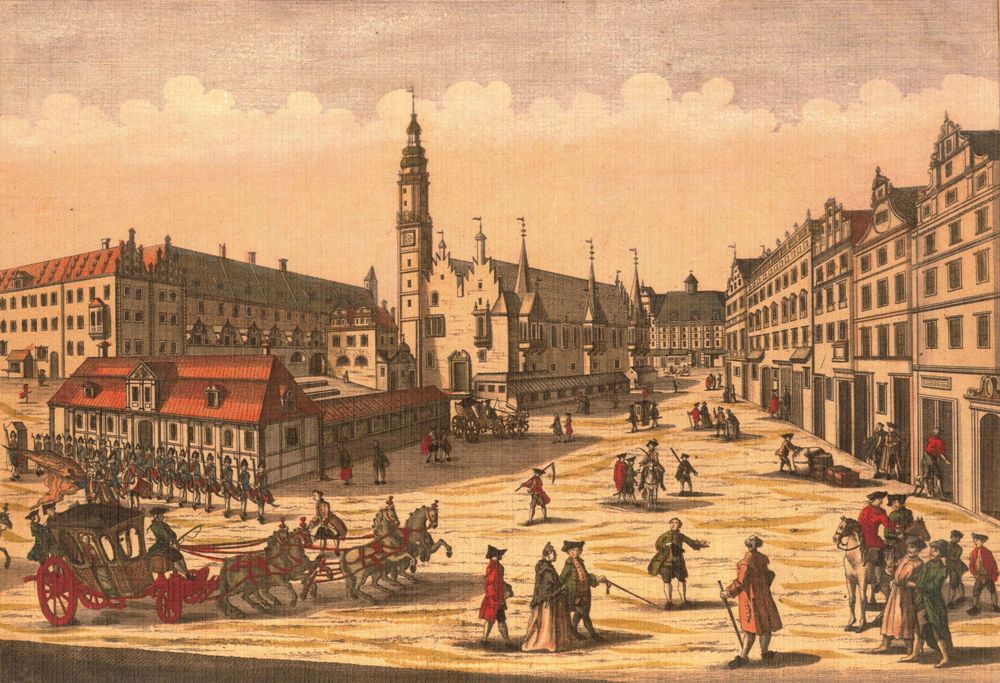
Wroclaw by G. Probst. 1760

The King of Prussia Frederick II (1712–1786) by A. Pesne. About 1745
Then she took to the road to Wroclaw through Alva, where she met and was impressed by the Prussian army.
She did not even stop when she knew that her way ran across the war-torn lands. Salomea could achieve an audience with Frederick II and asked him to give her passport.
-
Desire for adventures and the need to earn drove Salomea from country to country, from city to city. So she went from place to place: Poland and Silesia, Bulgaria, Moldova. She treated patients in Lviv, Kamenetz-Podolsk, Bucharest, Jassy, Kiev, Warsaw, Dubna, Khotyn, Lublin etc. She was proving again and again that she always had a "pair of loaded pistols".

Lviv by S. Razvadovsky, S. Yanovsky. 1772
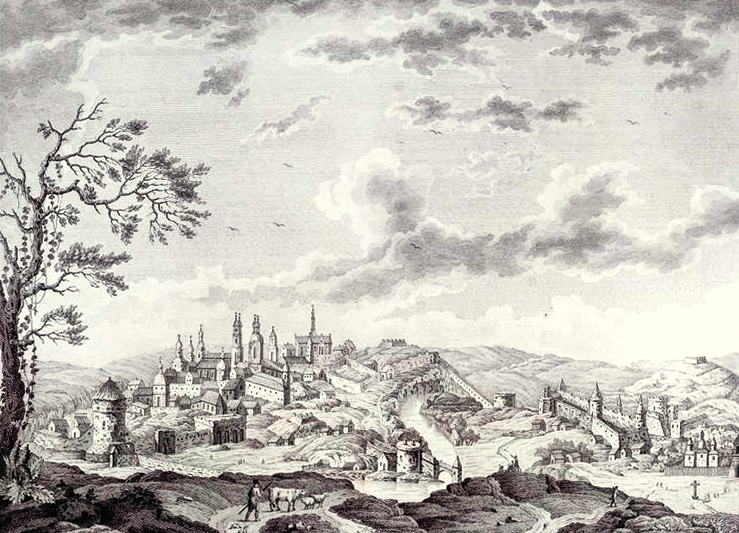
The Kamenetz-Podolsk cityscape and the fortress from the east side by E. Koshkin. 1794
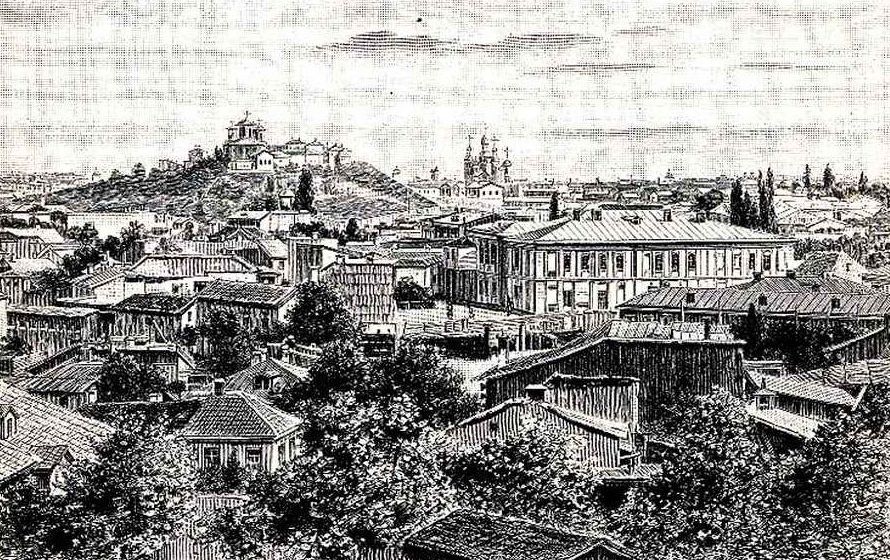
Vintage engraving of Bucharest
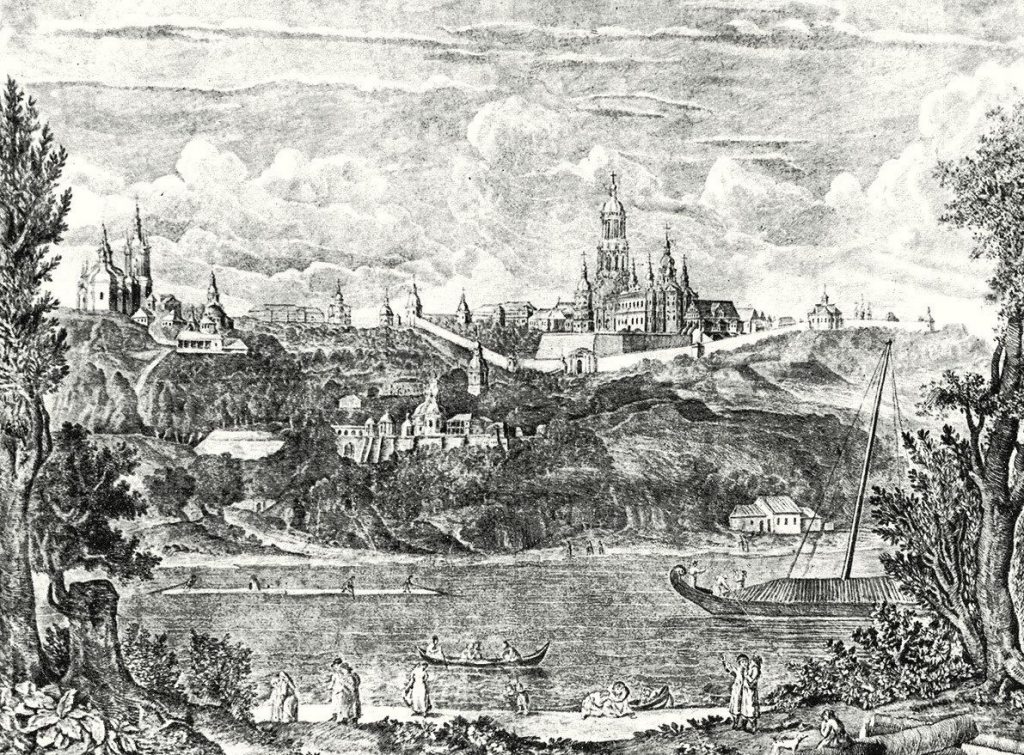
The Kiev cityscape

The Jassy city. Engraving by G. Bodenehr. First half of the 18th century

The Warsaw cityscape from the Royal Castle terrace by B. Belotto. 1773

Dubno by N. Orda

Engraving of the Khotyn Fortress. 1780

Lublin in the early 18th century. The cityscape by unknown artist in the Dominican Church
-
In many years Salomea back in Istanbul, the city where she spent her youth. The Salomea's position in Turkish society strengthened. She was not more considered as a foreigner. She became a doctor in a sultan’s harem.
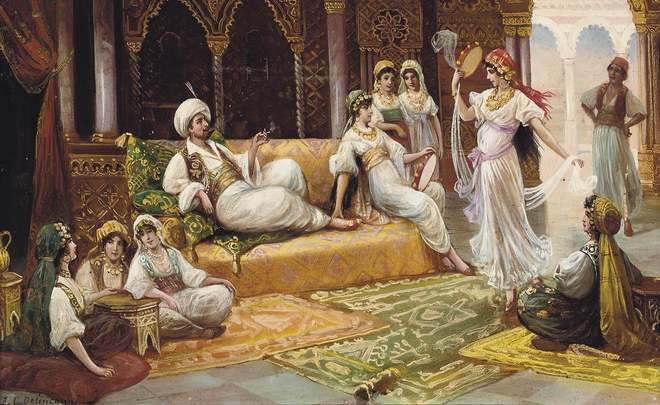
Dance in a harem by Y. Delincourt
In her memoirs, Salomea explained the Sultan's yard arrangement, talked about the customs and traditions of the Sultan's family, the untold wealth of Turkish palaces, and left various stories about the Sultan Mustafa III’s court.


The Divan Meeting
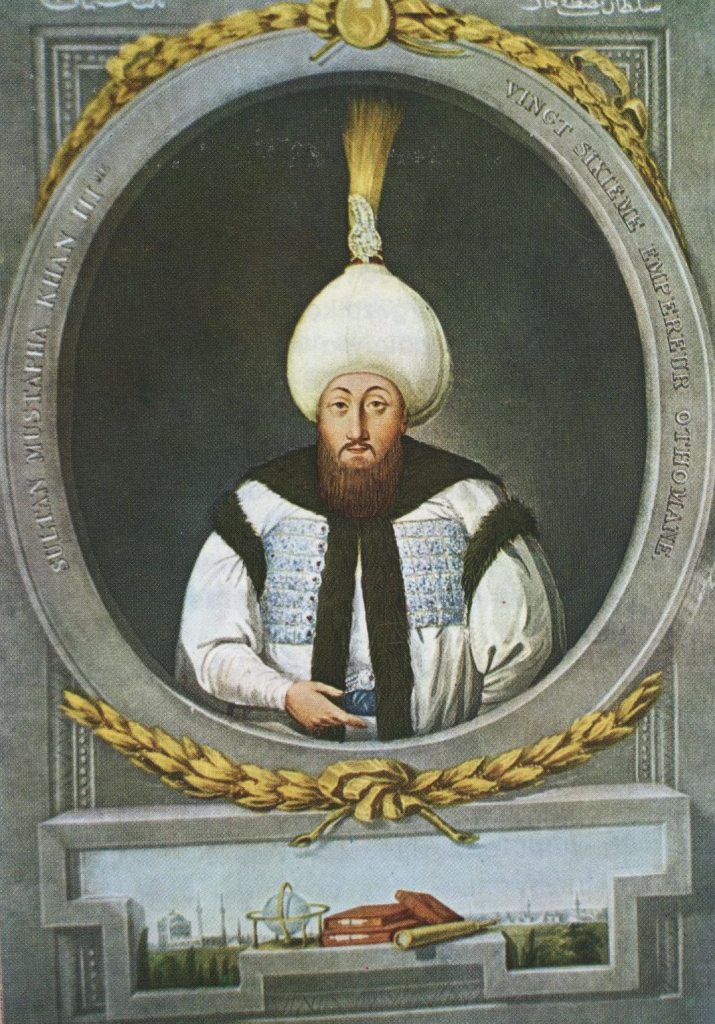
Mustafa III (1717–1774)
Salomea gave interesting information about the Turkey’s life, described the customs of various nationalities and faiths of the country, told about life in Istanbul in a fascinating way.
Salomea also told the story of the Cathedral of St. Sophia (Hagia Sophia) foundation.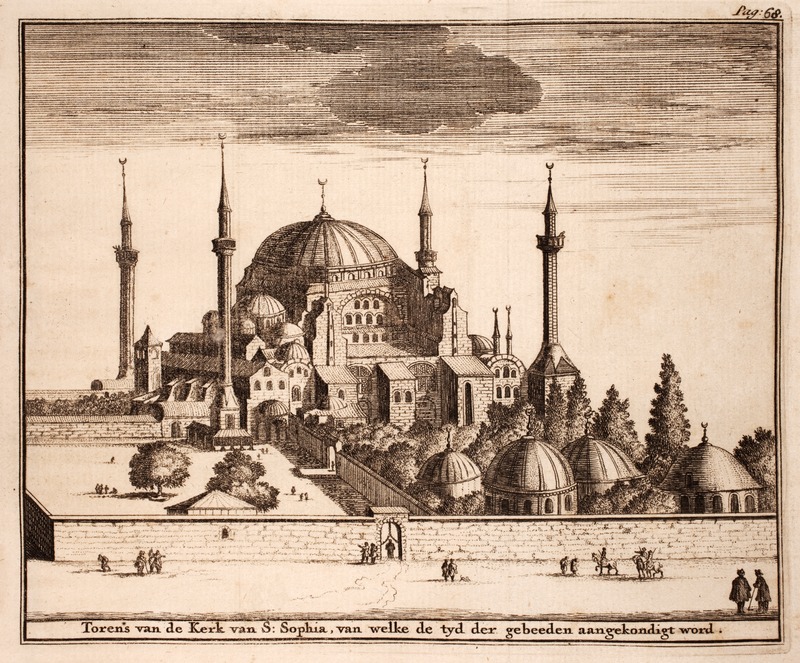
The Hagia Sophia by A. Reland. 1719
Hagia Sophia is the former Greek Orthodox Christian patriarchal cathedral, later a mosque and now a museum, a world famous monument of Byzantine architecture, a symbol of the "golden age" of Byzantium. The official name of the monument today is Hagia Sophia Museum.
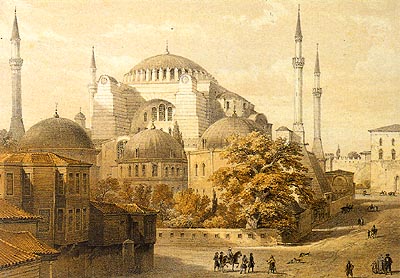
The Hagia Sophia by Fossati brothers. 1852

The Hagia Sophia by Fossati brothers. 1852
-
In 1760 Salomea began to prepare to the trip to Holy Land as a pilgrim. Before that she gave a significant part of her property to the poor Christians and Turks.

Antique lithograph "Holy Land" by D. Roberts, L. Haghe, J. Crowley. 1855

View of ancient Jerusalem by A. Ilzner. 1862
We do not know whether she effectuated het intent or not and as well as the further fate of this courageous and unusual woman is unknown.
-
At the end of the book there are some reflection on various religions, as well as fascinating stories heard from other people are noted. Salomea wanted to write a special medicine book.
The Salomea Rusiecka’s memoirs represent is a rich and interesting source on the history and geography of the peoples of several countries. The reader will be able not only to learn about the life of a doctor-traveler, but also get an image of the middle of the 18th century, to meet culture, traditions and certain historical events.
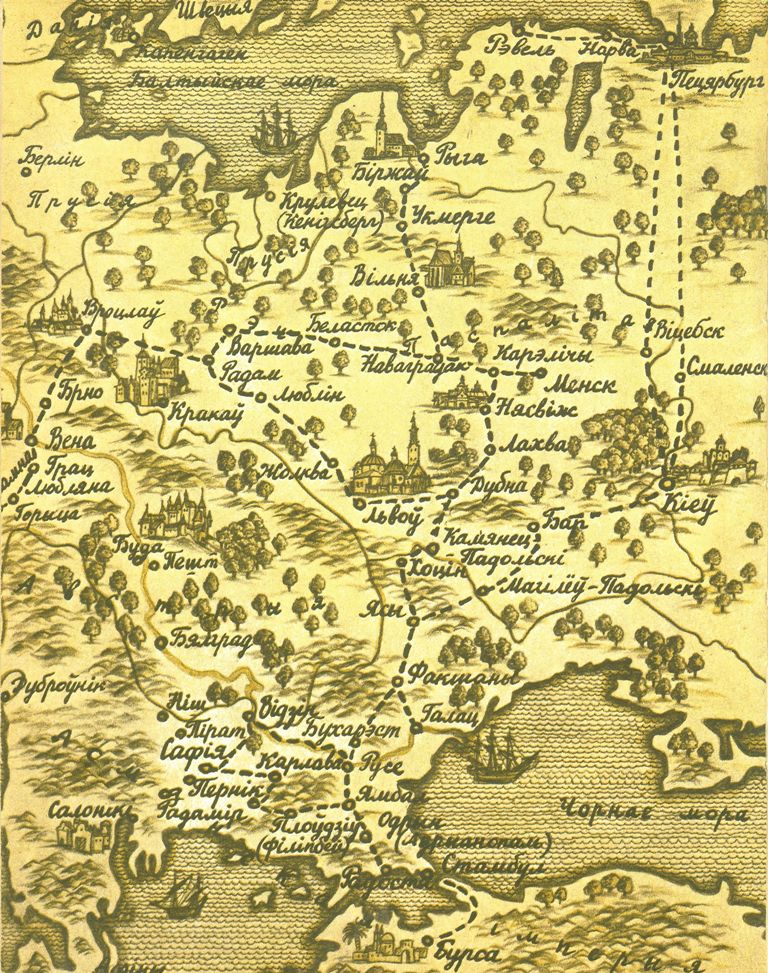
Travel map of Salome Rusiecki from the book
"Avantury Maygo zhytstsya" by S. Pilshtynova. Minsk, 1993
-
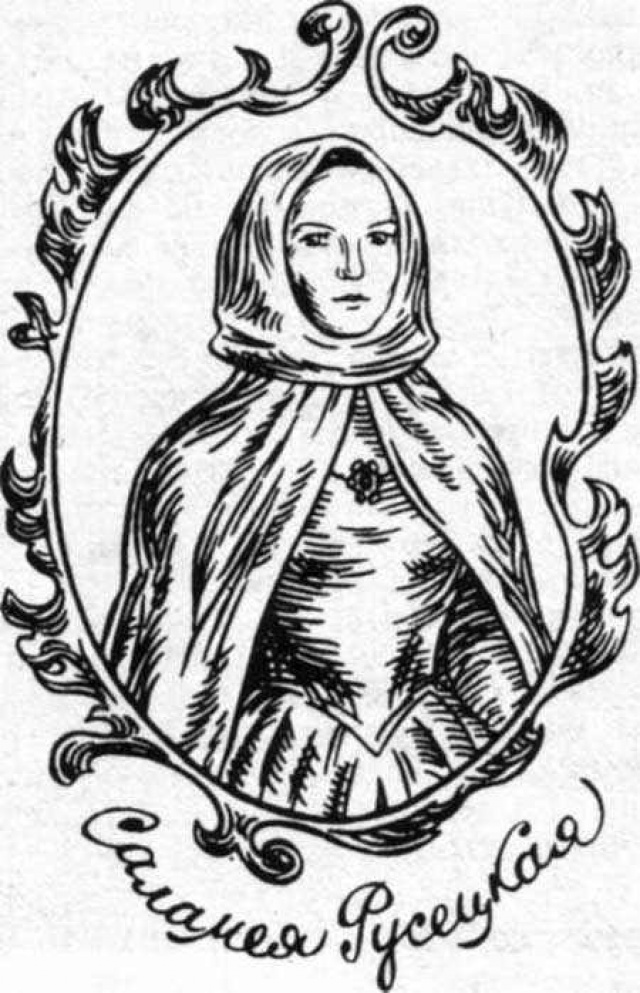
Portrait of Salomea Rusiecka by E. Kulik. 1989
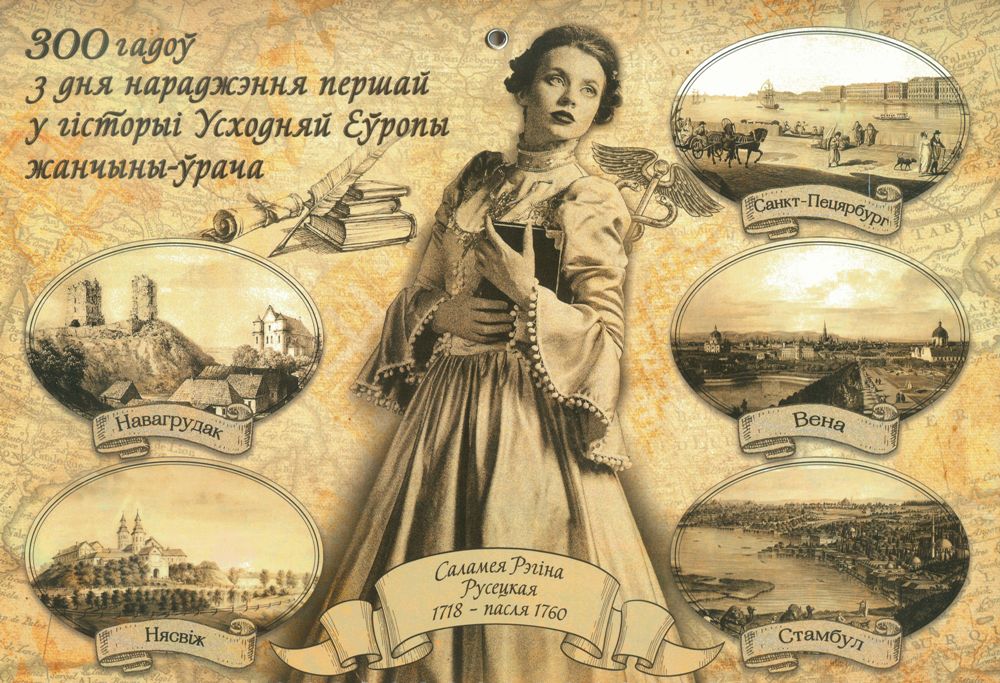
The wall tear-off calendar. Minsk, 2018
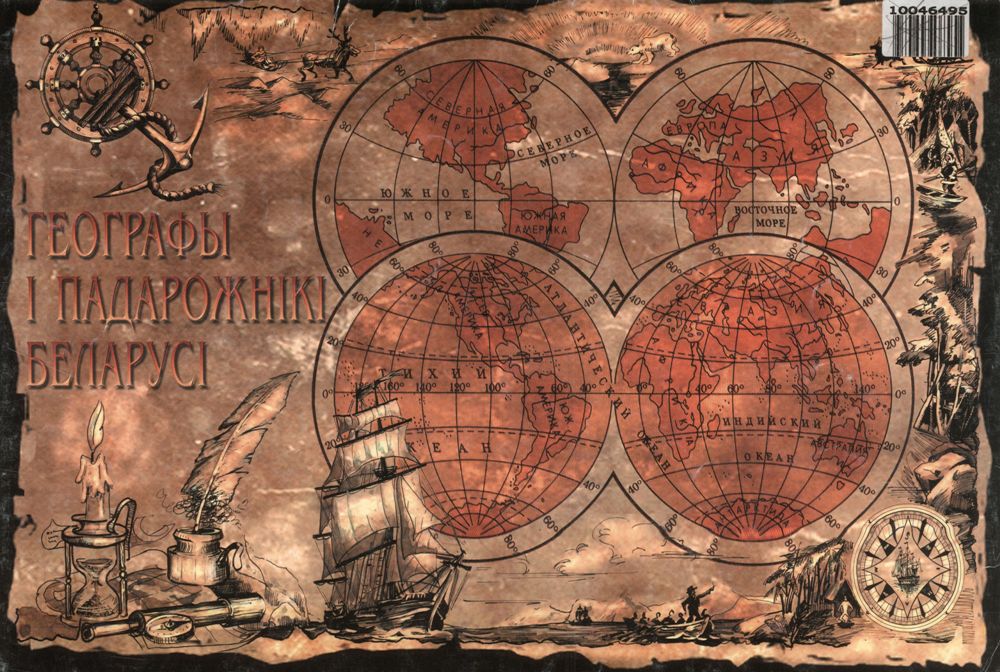

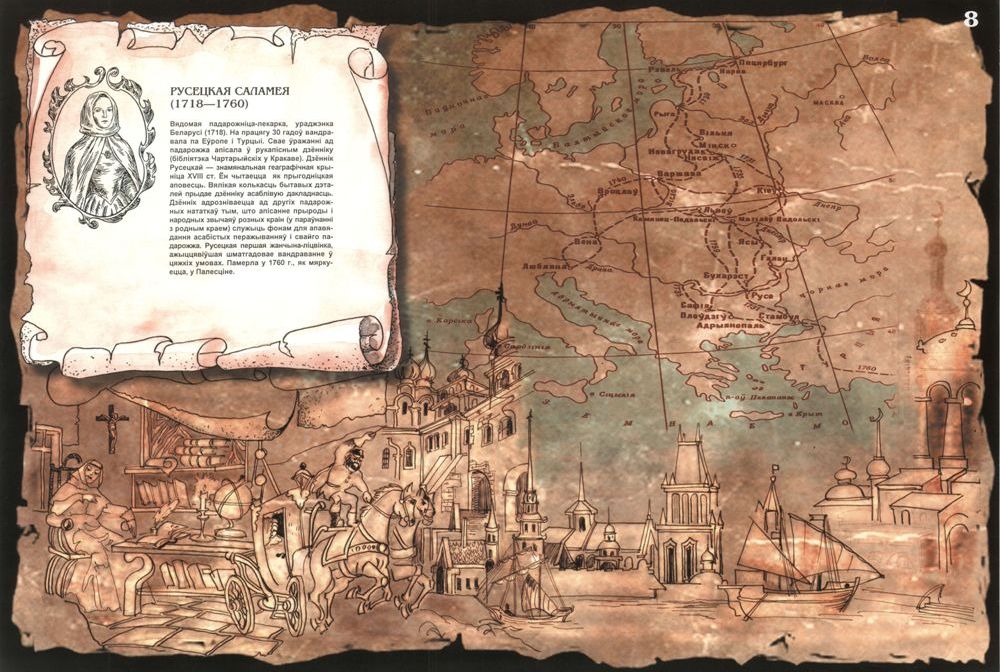
Album-atlas about Belarusian geographers and adventurers,
illustrated by A.L. Zhelezkin. Minsk, 1999
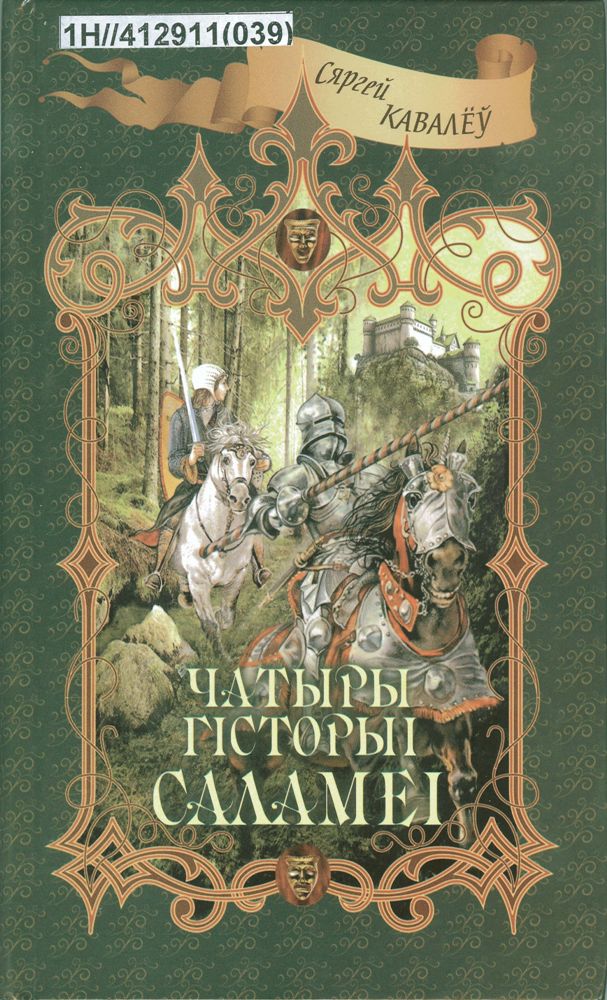
«Chatyry gistoryi Salamei» by Sergey Kovalev. Minsk, 2013

Bookmark «Salamea Rusiecka-Pilshtyn». Minsk, 2015
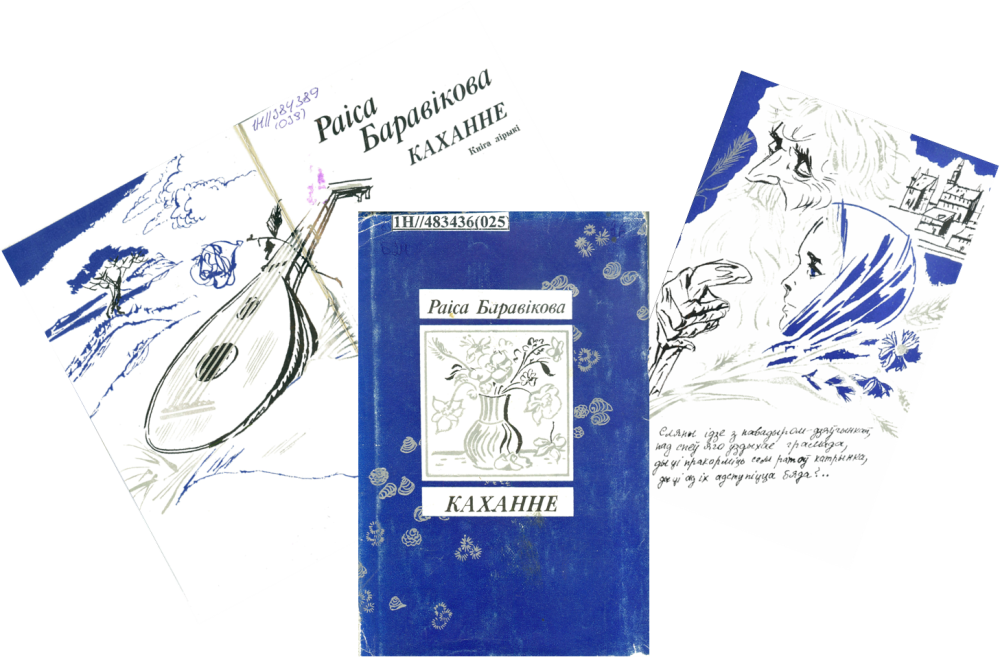

«Salamea» from the book of lyrics «Kahanne»
by Raisa Borovikova. Minsk, 1987
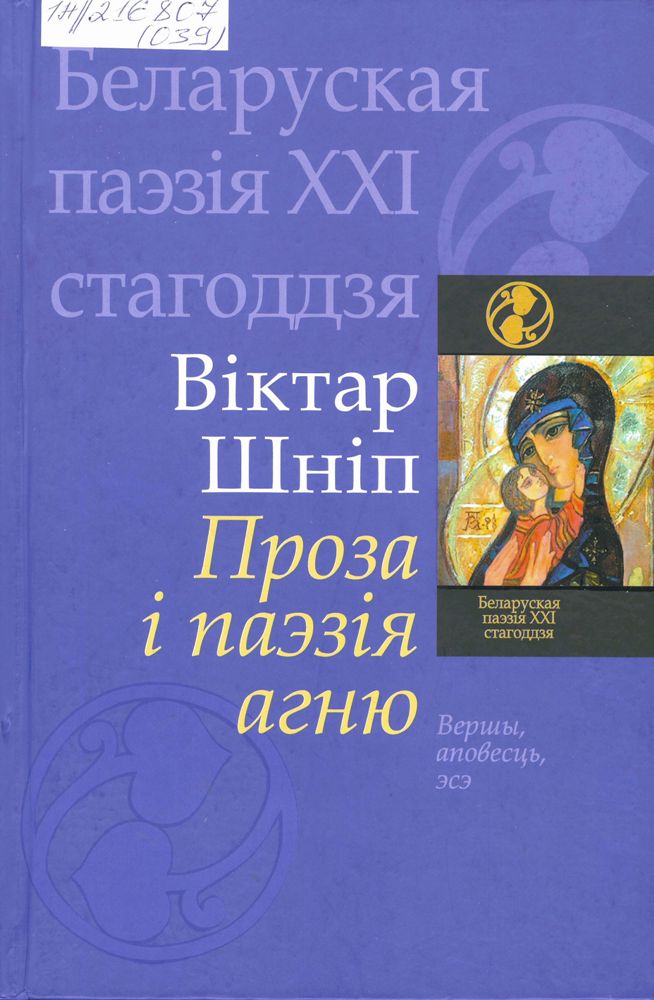

«Balada Salamei Pilshtynovay» from the book
«Prosa i Paeziya Agnu» by Victor Shnip. Minsk, 2010

«Vandrouki lekarki z Navagradka» by Ales Martinovich from the book «Zernye da zernya».
Minsk, 1996
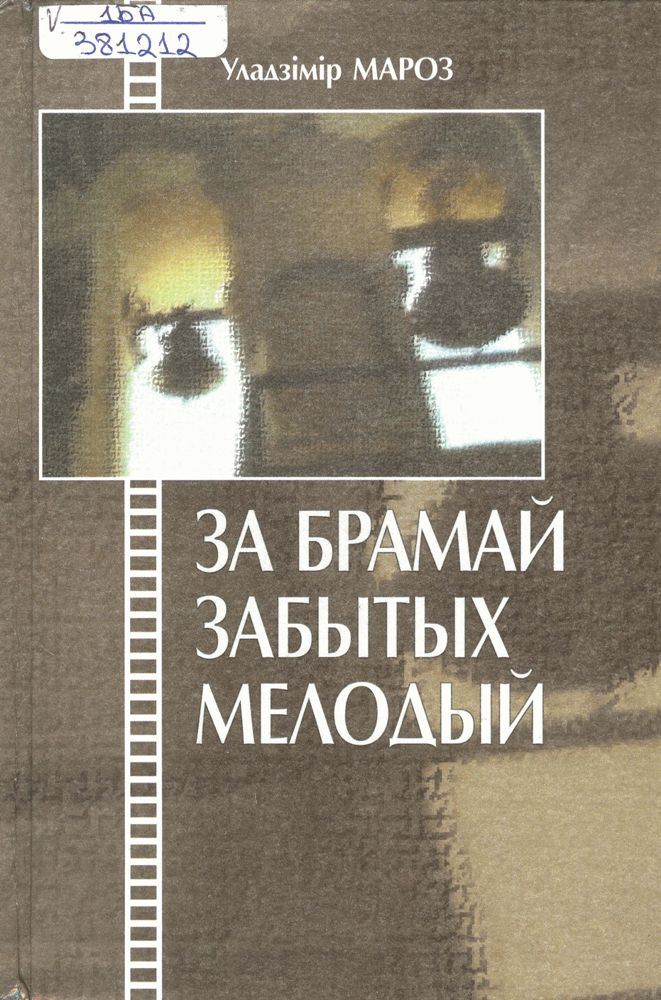
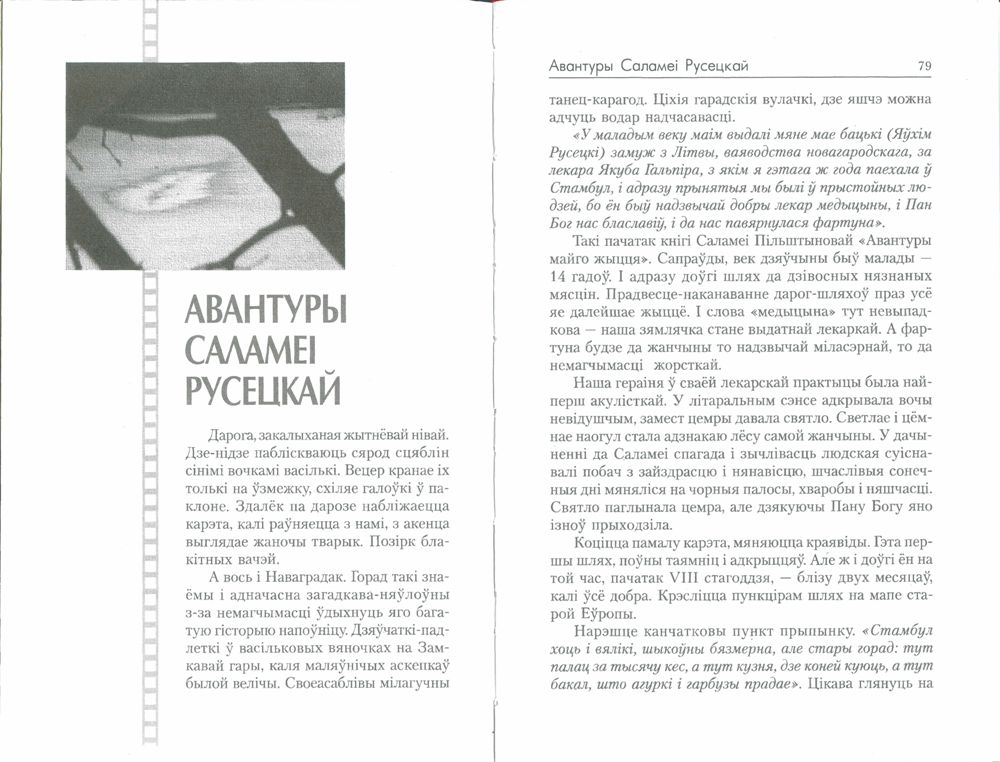
«Avantury Salamei Rusetskay» from the book
«Za Brahmay zabyty melodiy» by Vladimir Moroz. Minsk, 2004

A scene from the «Salamea and I yaye amaraty» spectacle based on a play by S. Kovalev on the stage of the Minsk Regional Drama Theater in Molodechno, 1996.
Directed by R. Talipov.
In the role of Salomea: Irina Klepatskaya,
In the role of Pilshtyn: Andrey Bubashkin

Poster of the «Salamea Rusetskaya» play based on the S. Kovalev's play “Chatyry Gistoryi Salamei”. Brest Regional Drama and Music Theater. Brest, 1999.
Directed by A. Bakirov.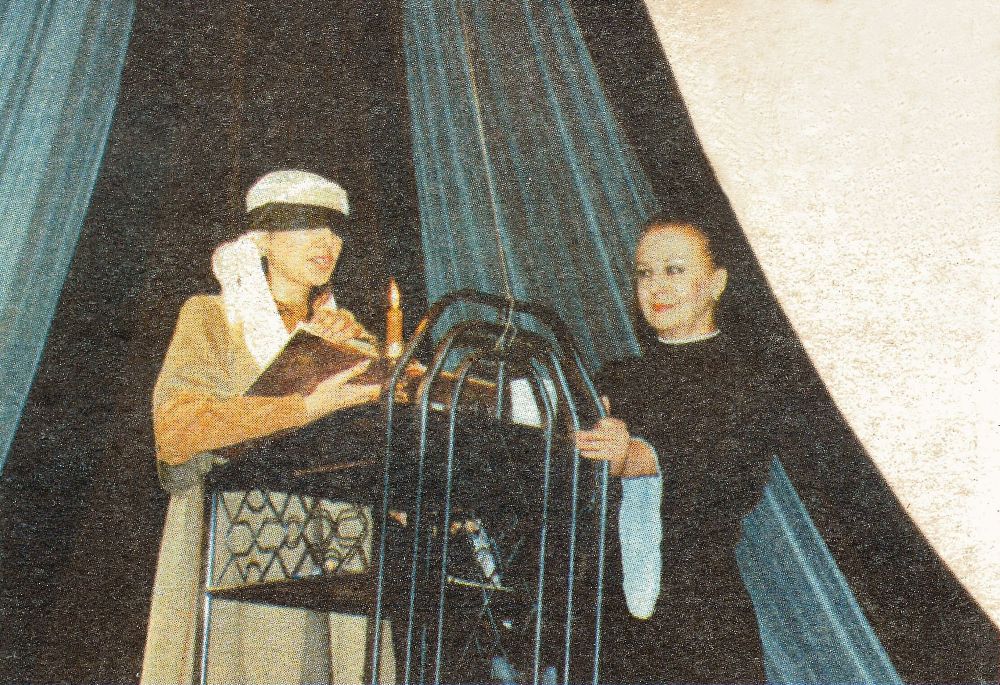
Scene from the play.
Salomea: Tamara Levchuk,
Ayse: Natalia Lobko
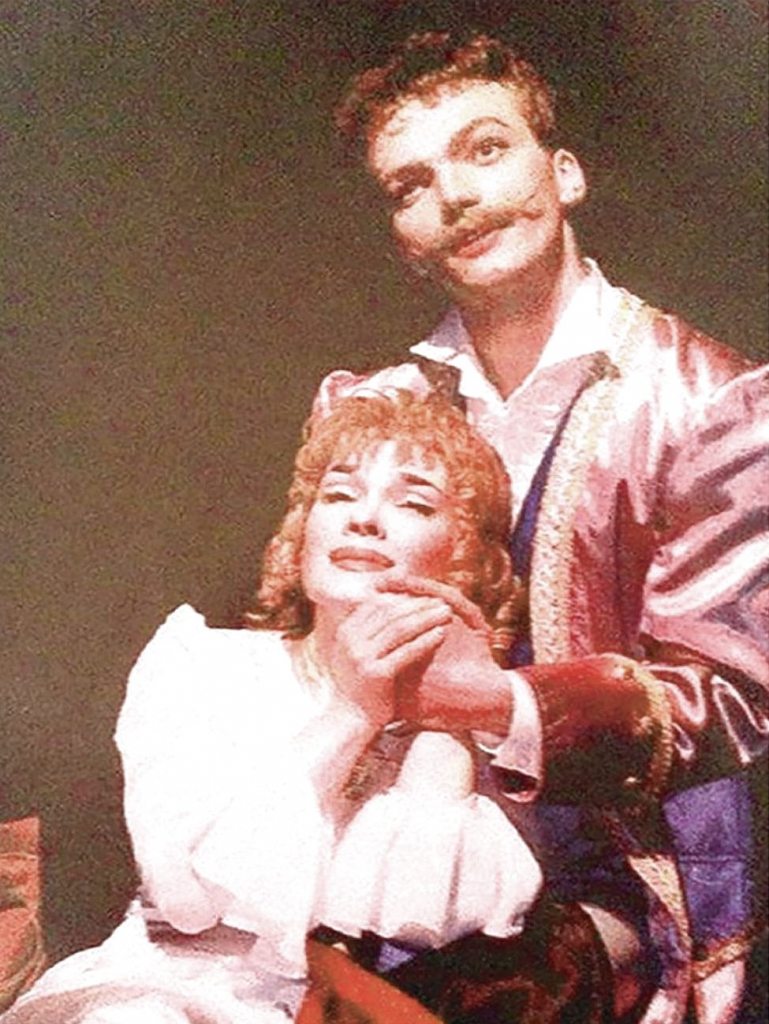
Scenes from the play “Salome” based on the play based on the S. Kovalev's play “Chatyry Gistoryi Salamei”. National Academic Theater named after Yanka Kupala. Minsk, 2001. Directed by A. Gartsuev.
In the role of Salomea: Zoya Belohvostik
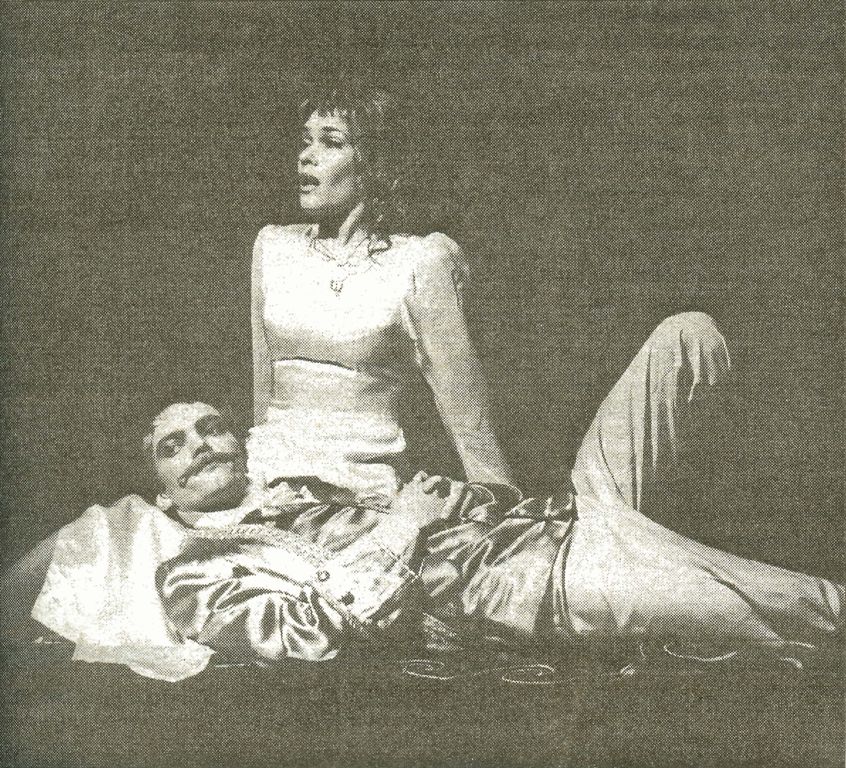


Theatrical performance in the framework of the round table
«Persons from the Navahrudak Land: Salomea Regina Rusetskaya»
in the Novogrudok district library. March 23, 2018
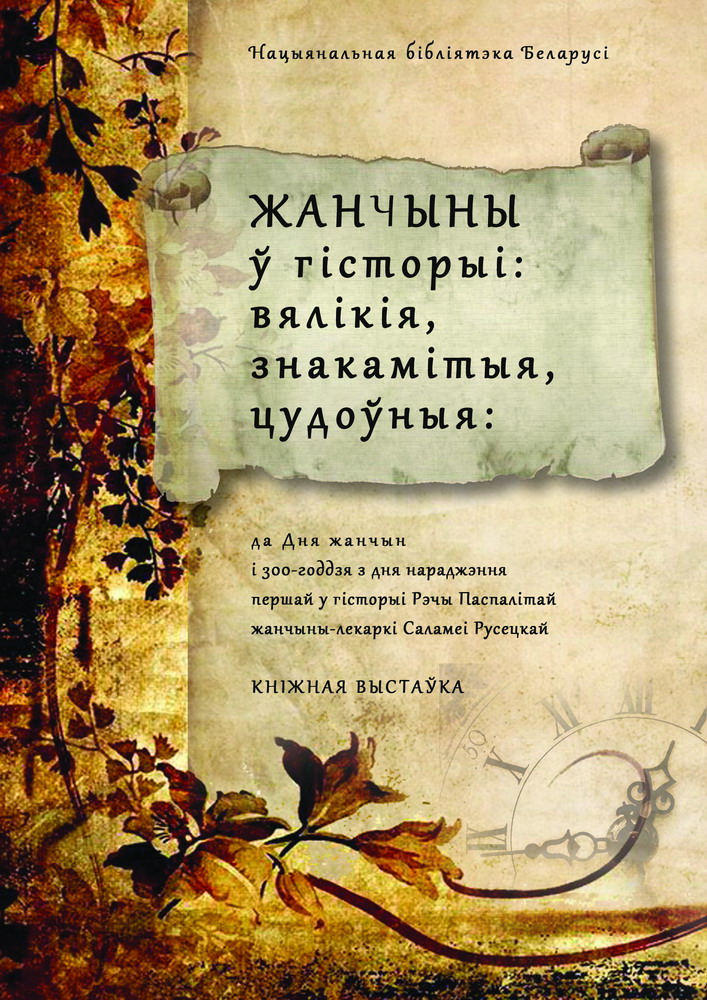
A book exhibition dedicated to the Day of Women and the 300th anniversary of the first ever Polish-Lithuanian Commonwealth woman doctor Salomea Rusiecka. National Library of Belarus,
March 8 – April 3, 2018
-
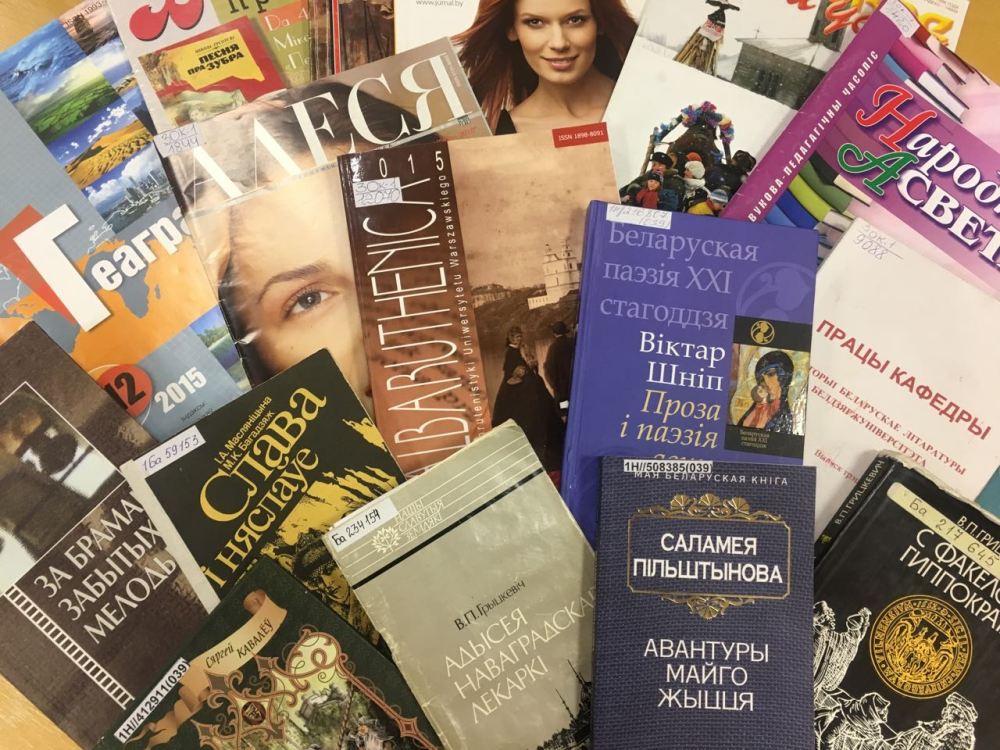
Грицкевич, В. П. Путешествия наших земляков : из истории страноведения Белоруссии / В. П. Грицкевич. – Минск, 1968. – 233 c.
Грицкевич, В. П. С факелом Гиппократа : из истории белорусской медицины / В. П. Грицкевич. – Минск, 1987. – 270 с.
Пензер, Н. Гарем : история, традиции, тайны : [перевод с английского] / Н. Пензер. – Москва, 2005. – 301, [2] с.
Рублевская, Л. И. Амараты, разбойники и красота. Саломея Русецкая (1718 – после 1760) / Л. И. Рублевская // Рыцари и дамы Беларуси : исторические очерки / Л. Рублевская. – Минск, 2013. – С. 116–121.
Багадзяж, М. Лекарка манархаў / М. Багадзяж // Жанчыны, найбольш знакамітыя ў гісторыі Беларусі / Ірына Масляніцына, Мікола Багадзяж ; [мастак І. Гардзіёнак]. – Мінск, 2008. – С. 48–55.
Багадзяж, М. К. Русецкая Саламея Рэгіна (1718 – пасля 1760) / М. К. Багадзяж // Мысліцелі і асветнікі Беларусі, X–XIX стагоддзі : энцыклапедычны даведнік. – Мінск, 1995. – С. 285–287.
Баравікова, Р. А. Каханне : кніга лірыкі / Р. Баравікова ; [мастак В. Тарасаў]. – Мінск, 1987. – 173, [1] с.
Грыцкевіч, В. П. Адысея наваградскай лекаркі : Саламея Русецкая / В. П. Грыцкевіч ; [навуковы рэдактар А. О. Лойт]. – Мінск, 1989. – 52, [1] с.
Грыцкевіч, В. П. Шляхі вялі праз Беларусь : нарыс / В. П. Грыцкевіч, А. Мальдзіс. – Мінск, 1980. – 269, [2] c.
Кавалёў, С. В. Чатыры гісторыі Саламеі : выбраныя п'есы / С. В. Кавалёў. – Мінск, 2013. – 333, [2] с.
Кашанкова, Л. В. Роля жанчын Гарадзеншчыны ў яе развіцці / Л. В. Кашанкова // Женщина. Общество. Образование : материалы 11-й международной междисциплинарной научно-практической конференции 19–20 декабря 2008 г. – Минск, 2009. – Т. 2. – С. 213–217.
Каяла, У. І. Анатомія кахання ў рамане Саламеі Русецкай-Пільштыновай «Авантуры майго жыцця» / У. І. Каяла // Міжнародныя Шамякінскія чытанні «Пісьменнік – Асоба – Час» : матэрыялы II Міжнароднай навукова-практычнай канферэнцыі, Мазыр, 20–21 кастрычніка 2011 г. – Мазыр, 2011. – С. 121–126.
Ліпніцкая, С. С. Забытыя імёны беларускай навукі і культуры. Саламея Русецкая / С. С. Ліпніцкая // Актуальные вопросы современной медицины и фармации : материалы 55-й итоговой научно-практической конференции студентов и молодых ученых ВГМУ, 23–24 апреля 2003 года. – Витебск, 2003. – С. 343–345.
Мальдзіс, А. «Авантуры» Пільштыновай / А. Мальдзіс // Беларусь у люстэрку мемуарнай лiтаратуры ХVIII стагоддзя : нарысы быту і звычаяў / А. Мальдзіс. – Мінск, 1982. – С. 33–41.
Мальдзіс, А. І. Як жылі нашы продкі ў XVIII стагоддзі : эсэ ; Восень пасярод вясны : аповесць, сатканая з гістарычных матэрыялаў і мясцовых паданняў : [для сярэдняга і старэйшага школьнага ўзросту] / А. І. Мальдзіс. – Мінск, 2009. – 477 [2] с.
Мароз, У. В. Авантуры Саламеі Русецкай / У. В. Мароз // За брамай забытых мелодый : эсэ. Вершы. Мініяцюры / У. В. Мароз. – Мінск, 2004. – С. 78–89.
Марціновіч, А. Зерне да зерня : гісторыя ў асобах : эсэ, нарысы / А. Марціновіч. – Мінск, 1996. – 364 с.
Масляніцына, І. А. Слава і няслаўе : гістарычна-біяграфічныя нарысы пра жанчын, жыццё i дзейнасць якiх звязаны з беларускай зямлёй, VI–XVIII стст. / І. А. Масляніцына, М. К. Багадзяж. – Мінск, 1995. – 253, [2] с.
Паміж Беларуссю і Польшчай. Драматургія Сяргея Кавалёва / [пад рэдакцыяй А. Ліопа, А. Баровец]. – Мінск, 2009. – 435 с.
Пільштынова, С. Авантуры майго жыцця : [раман] / С. Пільштынова. – Мінск, 2008. – 332, [1] с.
Пільштынова, С. Авантуры майго жыцця (урыўкі) / С. Пільштынова // Літаратура XVII–XVIII стагоддзяў / навуковы рэдактар В. А. Чамярыцкі. – Мінск, 2012. – Т. 2 : Залатая калекцыя беларускай літаратуры : у 50 т. / рэдкалегія: У. В. Гніламёдаў [і інш.]. – С. 479–518.
Сачэнка, С. Ці была Саламея Пільштынова аўтарам кнігі «Авантуры майго жыцця»? / С. Сачэнка // Працы кафедры гісторыі беларускае літаратуры Белдзяржуніверсітэта. – Мінск, 2002. – Вып. 3. – С. 131–132.
Чукічова, Н. Авантура С. Пільштыновай. Князь Ракацы: пра неабходнасць удакладнення рэальнага каментара / Н. Чукічова // Шлях да ўзаемнасці = Droga ku wzajemności : матэрыялы XX міжнароднай навуковай канферэнцыі, Гродна, 23–24 кастрычніка 2014 г. – Мінск, 2015. — С. 196–202.
Чукічова, Н. Пра канвертацыю казкавых архетыпаў у літаратурным сюжэце, альбо Марфалогія адной авантуры / Н. Чукічова // Acta Albaruthenica. – 2015. – T. 15. – С. 39–55.
Шніп, В. А. Балада Саламеі Пільштыновай / В. А. Шніп // Проза і паэзія агню : вершы, аповесць, эсэ / В. Шніп. – Мінск, 2010. – С. 24–25.
Kuchowicz, Z. Żywoty niepospolitych kobiet polskiego baroku / Z. Kuchowicz. – Łodź, 1989. – 157, [2] c.
Pollak, R. Od Renesansu do Baroku / R. Pollak. – Warszawa, 1969. – 332 с.
Глебова, Н. У белорусов своя Саломея / Н. Глебова // Вечерний Минск. – 2001. – 19 апр. – С. 3.
Данейко, Е. Три истории любви / Е. Данейко // Белорусская деловая газета. – 2001. – 3 мая. – С. 14.
Киновиченя, Э. Человек с планеты милосердного солнца : об удивительной судьбе нашей землячки, лекарки Саломеи-Регины Русецкой / Э. Киновиченя, Г. Карвиго // Здоровье и успех. – 2008. – № 2. – С. 22–23.
Команава, Т. Vivat, «Саламея»! / Т. Команава // Культура. – 2001. – 18–24 жн. – С. 8.
Лычагина, Т. Авантюры Саломеи Русецкой / Т. Лычагина, В. Жидолович // Кем быть? : компас в мире профессий. – 2015. – № 1. – С. 42–43.
Асіноўскі, С. М. Адысея Саламеі Русецкай / С. М. Асіноўскі // Архівы і справаводства. – 2010. – № 3. – С. 146–152.
Ахметшын, А. Саламея нічога не ведала пра каханне! / А. Ахметшын // Чырвоная змена. – 2001. – 22 мая. – С. 6.
Бакіраў, А. Мужчынскі погляд / А. Бакіраў // Культура. – 2001. – 29 верас. – 5 кастр. – С. 8.
Бартніцкая, М. Дык хто ж яна, Саламея? / М. Бартніцкая // Рэспубліка. – 2001. – 11 мая. – С. 8.
Брылеўскі, М. М. Выхадцы з Беларусі ў даследаваннях бліжняга і дальняга замежжа / М. М. Брылеўскі // Геаграфія. – 2015. – № 12. – С. 37–43.
Гаробчанка, Т. Проста… эратычны жыццяпіс / Т. Гаробчанка // Літаратура і мастацтва. – 1997. – 18 крас. – С. 10.
Жанчыны ў гісторыі Беларусі / падрыхтавала Л. М. Смірнова // Бібліятэка прапануе. – 2003. – № 1. – С. 24–31.
Кашанкова, Л. Славутыя дзяячкі Гродзеншчыны / Л. Кашанкова // Алеся : Работніца і сялянка. – 2010. – № 10. – С. 34–37.
Ляўчук, Т. Б. Фемінізм? Гуманізм! / Т. Б. Ляўчук ; гутарыла Т. Команава // Культура. – 2001. – 29 верас. – 5 кастр. – С. 8.
Масляніцына, І. Аўтар загадкавай кнігі / І. Масляніцына, М. Багадзяж // Женский журнал. – 2010. – № 1. – С. 72.
Масляніцына, І. Жанчыны ў гісторыі Беларусі / І. Масляніцына, М. Багадзяж // Беларускі гістарычны часопіс. – 2005. – № 9. – С. 48–54.
Некрашевіч-Кароткая, Ж. Саламея, self-made womаn / Ж. Некрашэвіч-Кароткая, С. Воцінава // Маладосць. – 2018. – № 7. – С. 86–94.
Смолік, А. І. Саламея Рэгіна Русецкая: лекарка, вандроўніца, феміністка : роля і ўплыў жанчын на развіццё грамадскага і прыватнага жыцця ў XVIII стагоддзі / А. І. Смолік // Народная асвета. – 2014. – № 2. – С. 78–83.
Цімошык, Л. Беларуская Саламея, якую жыццё закінула нават у Турцыю / Л. Цімошык // Звязда. – 2001. – 18 мая. – С. 10.
Чыгір, Г. Вяртанне Саламеі / Г. Чыгір // Народная газета. – 2001. – 26 крас. – С. 2.
Беллотто, Бернардо [Изоматериал] : [альбом ] / Б. Беллотто. – Москва, 2015. – 235 с.
Ленинград в изобразительном искусстве [Изоматериал] : альбом / Составитель В. А. Пушкарев. – Ленинград, 1975. – 236 с.
Мартынов, А. Е. Виды Петербурга и его окрестностей [Изоматериал] / художник А. Е. Мартынов. – СПб, 1993. – 1 обл. (16 отд. л., 4 л. текста) : офсет цв. ; 39х20 см.
Селинова, Т. А. Иван Петрович Аргунов. 1729–1802 / Т. А. Селинова. – [Москва, 1973]. – 211 с.
Финкель, К. История Османской империи : видение Османа : [перевод с английского] / К. Финкель. – Москва, 2010. – 829, [2] с.
Фицрой, Ч. Стамбул времен султана за пять курушей в день : [дворцы и мечети, кофейни и бани в путеводителе по городу султанов] / Ч. Фицрой. – Москва, 2016 (макет 2017). – 190, [1] с.
Шэдэўры беларускай архітэктуры ў малюнках Напалеона Орды [Изоматериал] : з фондаў Нацыянальнай бібліятэкі Беларусі : [камплект паштовак] / мастак Н. Орда. – Мінск, 1997. – 13 л.
Bellotto, Bernardo. Widok Warszawy od strony Pragi – fragment [Выяўленчы матэрыял], 1770 : [рэпрадукцыя : паштоўка] / мастак Bernardo Bellotto. – Warszawa, [2003?]. – 1 л. : каляр. афсет ; 11,5х16,5 см.
Probst, Georg Baltazar. Wrocław, widok od południowego zachodu [Выяўленчы матэрыял] : Rycina z albomu «Guckkastenbilder» wydanego w Augsburgu po 1760 roku : (Biblioteka Uniwersytecka we Wrocławiu, Inw. graf. 3159) : [рэпрадукцыя / мастак Георг Бальтазар Пробст. – [Вроцлаў, 2017]. – 1 л. : каляр. афсет ; 20,5х29,3 см.
Vienna - St. Stephan's Cathedral [Выяўленчы матэрыял] : [паштоўка]. – Wien : Schones Osterreich, [1990]. – 1 л. : каляровы афсет ; 15х10,5 см.
Wien, Schloss Belvedere [Выяўленчы матэрыял] : [рэпрадукцыя : паштоўка] / [мастак] K. Schwetz. – Wien, [1940-е гг.]. – 1 л. : афсет каляр. ; 10,5 х 15 см.
Wien, Weltkulturerbe [Выяўленчы матэрыял] : the state of the art / [Projektmanagement: Arnold Klotz]. – Wien, 2006. – 183 c. : іл. – (Welterbe = World heritage / UNESCO) (In Zukunft Wien : Stadtgestaltung = The future Vienna : urban design).
Андреевский спуск [Изоматериал : Электронный ресурс] // Красавец Киев шлет вам привет – Режим доступа : http://www.kievtrip.com.ua/ru/Stati/Ulicy-i-ploschadi/Andreevskiy-spusk/. – Дата доступа : 01.08.2018.
История Вильнюса в гравюрах и картинах [Электронный ресурс] // Архитектурное наследие. – 2012. – 31 марта. – Режим доступа : https://arch-heritage.livejournal.com/1189783.html. – Дата доступа : 13.08.2018.
Йозеф Ракоци [Электронный ресурс] // Википедия. – 2018. – 27 июля. – Режим доступа : https://ru.wikipedia.org/wiki/%D0%99%D0%BE%D0%B7%D0%B5%D1%84_%D0%A0%D0%B0%D0%BA%D0%BE%D1%86%D0%B8. – Дата доступа : 13.09.2018.
Курукин, Т. Анна Иоанновна [Электронный ресурс] / Игорь Курукин // CoolLib. – Режим доступа : https://coollib.net/b/314331/read. – Дата доступа : 13.09.2018.
Нарва глазами древних путешественников [Электронный ресурс] // STENA.ee. – 2013. – 18 января. – Режим доступа : http://www.stena.ee/blog/oldnarva/narva-glazami-drevnih-puteshestvennikov. – Дата доступа : 25.07.2018.
Ревель (ныне Таллин) на старых гравюрах и картинах [Электронный ресурс] // История и современность. – 2012. – 14 мая. – Режим доступа : https://visualhistory.livejournal.com/82327.html. – Дата доступа : 10.07.2018.
Рига на старых гравюрах и картинах [Электронный ресурс] // История и современность. – 2012. – 28 мая. – Режим доступа : https://visualhistory.livejournal.com/87300.html. – Дата доступа : 10.07.2018.
Воцінава, С. Саламея. Авантуры яе жыцця [Электронны рэсурс] / С. Воцінава // Медицинский Вестник. – 2018. – 19 июня. – Рэжым доступу : http://www.medvestnik.by/ru/society/view/salameja-avantury-jae-zhytstsja-17889-2018/. – Дата доступу : 10.09.2018.
Kawecka, L. Polska diablica [Электронны рэсурс] / Lidia Kawecka // onet. – 2010. – 28 снежня. – Рэжым доступу : https://podroze.onet.pl/ciekawe/polska-diablica/l6ty8ng. – Дата доступу : 07.09.2018.
Jasińska, J. The Sultan’s Harem Doctor: Extraordinary life of Polish woman adventurer in the Ottoman Empire [Электронны рэсурс] / J. Jasińska // THEfirstNEWS. – 2018. – 18 жніўня. – Рэжым доступу : https://www.thefirstnews.com/article/the-sutlans-harem-doctor-extraordinary-life-of-polish-woman-adventurer-in-the-ottoman-empire-1759. – Дата доступу : 13.09.2018.
Ruse, Bulgaria [Электронны рэсурс] // Howling Pixel. – Рэжым доступу : https://howlingpixel.com/i-en/Ruse,_Bulgaria. – Дата доступу : 13.09.2018.
Books
Articles from periodicals
Visual material
Electronic resources

